
The Bottom Line
Introduction, Specifications, and Pricing

ASRock is a company focused on bringing performance motherboards to the market, and with Intel's X99 chipset, they have done just that. I previously reviewed the X99 Extreme11 WS-E/10G, a super-packed motherboard with a super-high price tag, but today I will look at a more affordable, yet well-endowed motherboard, the X99 Extreme6/ac.
The X99 Extreme6/ac carries a really long feature list, including Ultra M.2, wireless AC, Purity Sound 2, and a slew of others I will cover in the next few pages. The board is aimed to please users who want a lot of features with a price tag that won't break the bank.
Follow me as I put the X99 Extreme6/ac through our test suite and see what it is capable of.
Specifications

There are some features that really stick out with ASRock's X99 Extreme6/ac; 128GB DDR4 memory support with ECC and 12K Nichicon capacitors are two that top the list in terms of uniqueness. Most other X99 motherboards only support 64GB of memory, but ASRock has taken the server approach with their entire X99 lineup, which means that Intel Xeon server processors are fully supported, as are the technologies that come with them.
While this isn't a server board, many of the features are aimed at workstations, such as the USB DOM connector, which is used for very expensive software programs that require a USB drive for authentication.
Pricing
At the time of writing, the X99 Extreme6/ac is $279.99 at Newegg, while the X99 Extreme6 is $276.99, which means you get the wireless AC for only three more dollars, which is a really great deal. The price of the X99 Extreme6/ac makes it extremely competitive, sitting right at the midpoint of quality X99 motherboards.
PRICING: You can find the ASRock X99 EXTREME6/AC for sale below. The prices listed are valid at the time of writing, but can change at any time. Click the link to see the very latest pricing for the best deal.
United States: The ASRock X99 EXTREME6/AC retails for $323.13 at Amazon.
Australia: Find other tech and computer products like this over at PLE Computer's website.
Canada: The ASRock X99 EXTREME6/AC retails for CDN$395.33 at Amazon Canada.
Packaging and the X99 Extreme6/ac
Packaging and the Board
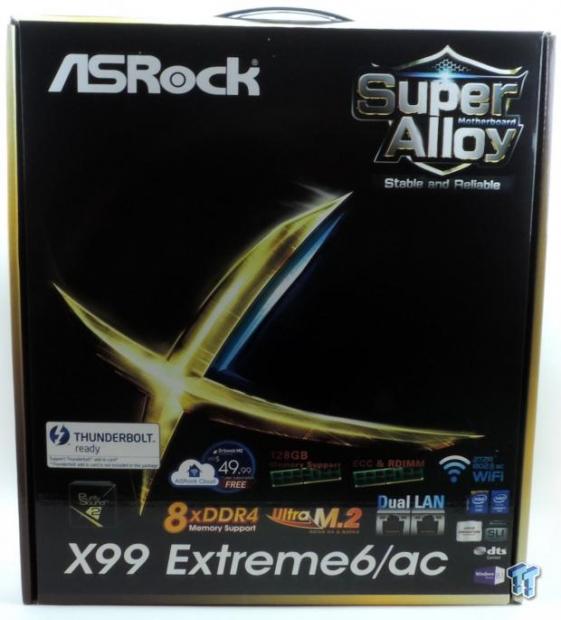
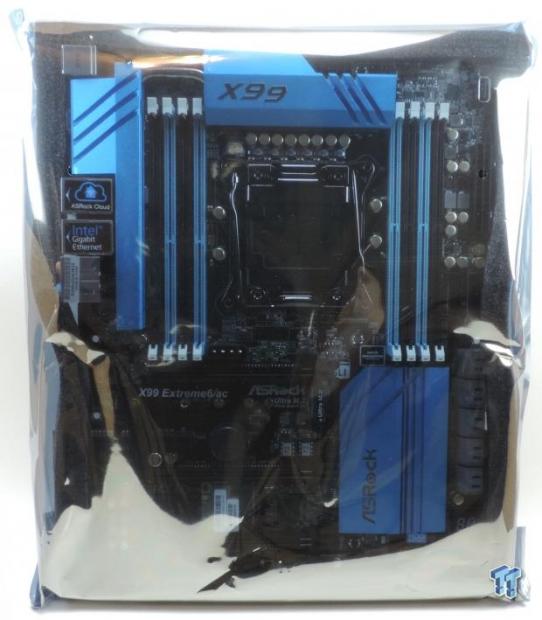
The box advertises the extreme memory support and the other noteworthy features such as dual LAN and wireless AC. The packaging is well done, the board is zip tied into a foam container, and there is an antistatic bag covering the board.
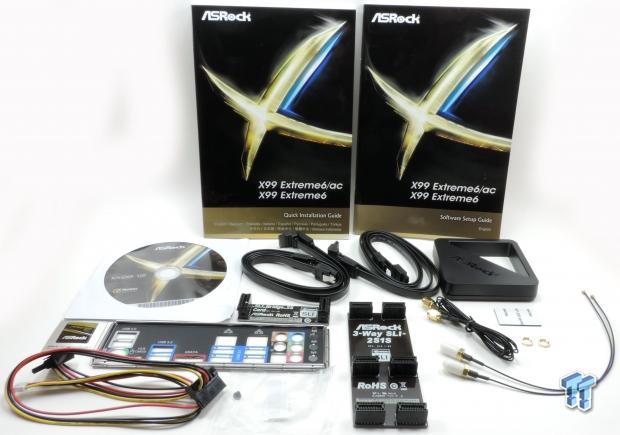
Accessories are plenty; 4x SATA6G cables, 2-Way SLI bridge, 3-Way SLI Bridge, Wi-Fi/BT4 antenna and wire extensions, IO Shield, SATA Saver power connectors, screw for M.2, manuals, case badge, and driver DVD.
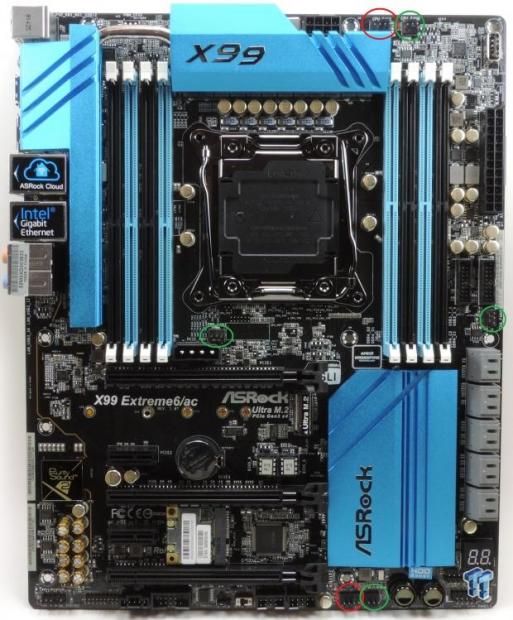
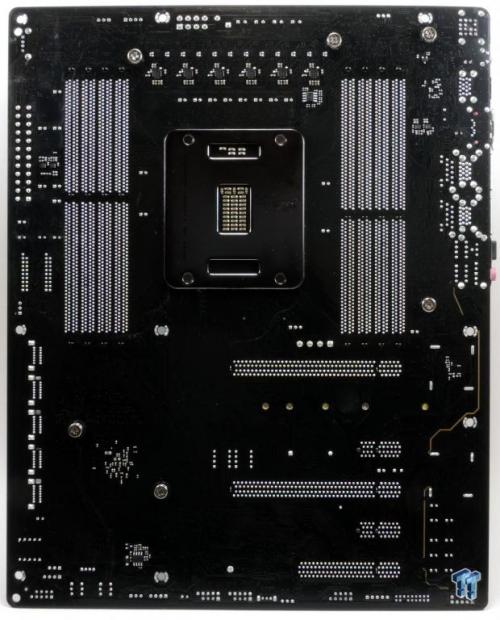
I have circled the fan headers on the board, there are a total of six headers, two circled in red are 4-pin PWM headers, and four circled in green are 3-pin voltage mode headers. The blue heat sinks look better in person, and even in a case with dim lighting the blue comes through. I actually like the shade of blue ASRock is using; but if you don't like blue, it is a bit hard to cover up. The back of the board is pretty bare which is a good thing.
You can see the PCB isolation for the audio, the doublers/dual drivers for the CPU VRM, and the low profile socket backing. Since this board is aimed at servers, there are no holes for the CPU socket coolers - make sure not to overtighten or you can screw into the PCB itself. The pins for the memory DIMMs that you can see on the back are very low profile; this reduces electrical noise and helps with clearance levels for certain chassis.
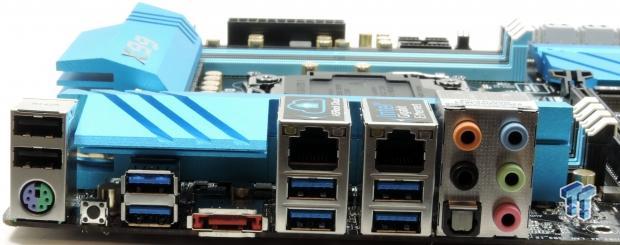
The back panel IO features a 2x1GBit NIC, 6x USB 3.0 ports, 2x USB 2.0 ports, PS/2 keyboard and mouse, a 7.1 TOSLINK for audio with S/PDIF out, eSATA6G, and a ClearCMOS button.
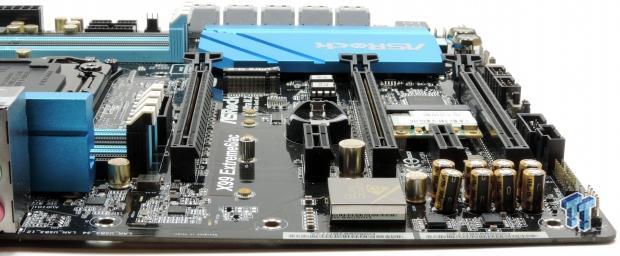
The PCI-E layout on this motherboard is optimized for performance, while it supports 3-way SLI and CrossFireX, you will lose the last 16x slot if you use the Ultra M.2 slot. The PCI-E layout is electrically wired at 16x/16x/8x in the three full sized 16x slots. The CMOS battery is in a position where even if you use two GPUs, you can still remove the battery, which is great.
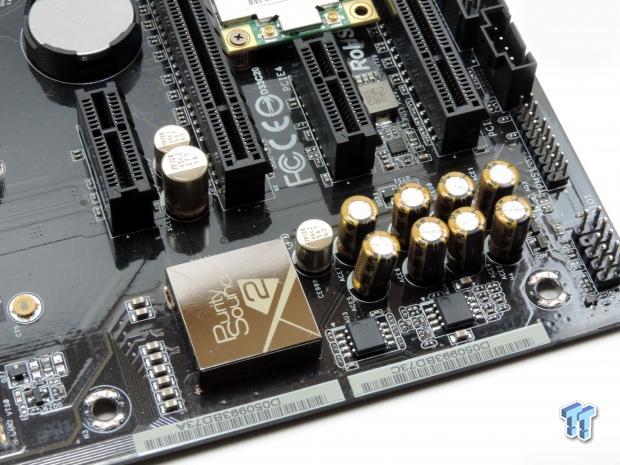
Purity Sound 2 is ASRock's upgraded ALC1150 implementation with high quality Nichicon electrolytic audio capacitors, dual amplifiers, and PCB isolation.
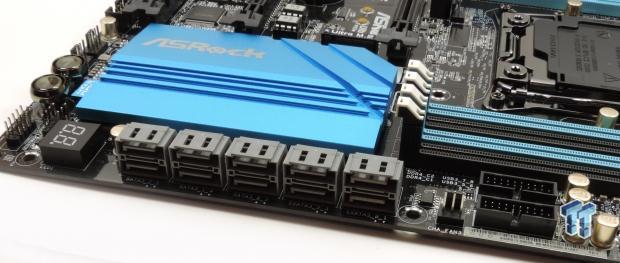
There are 10 SATA6G ports from the PCH. SSATA3_3 shares its bandwidth with the eSATA port on the backpanel and SSATA3_2 shares its bandwidth with the Ultra M.2 slot so it can run SATA based M.2 drives. Two USB 3.0 front panel headers are located north of the PCH which is great for cable management.
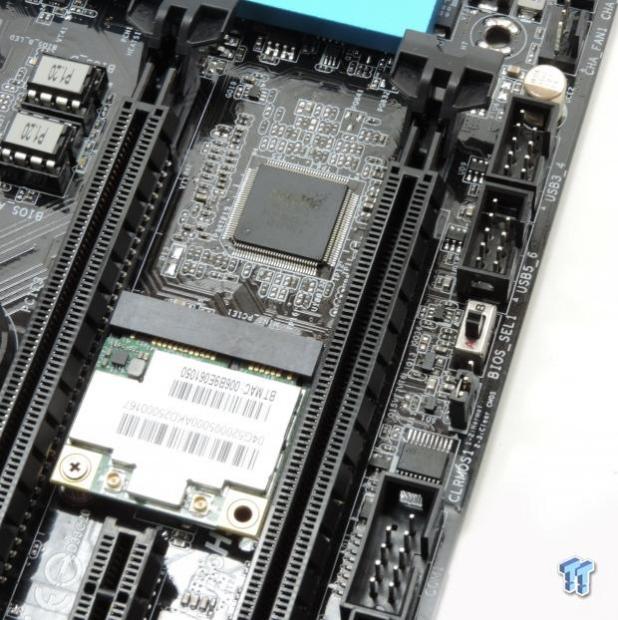
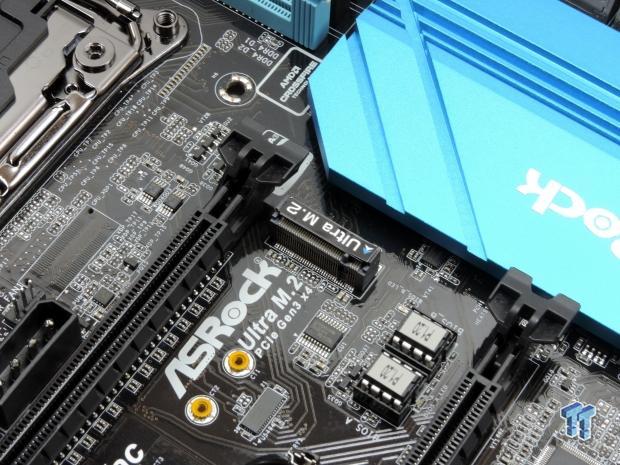
The wireless AC comes from a mini PCI-E card. There is a BIOS selection switch on the bottom of the board. The M.2 connector is located right beneath the first 16x slot.
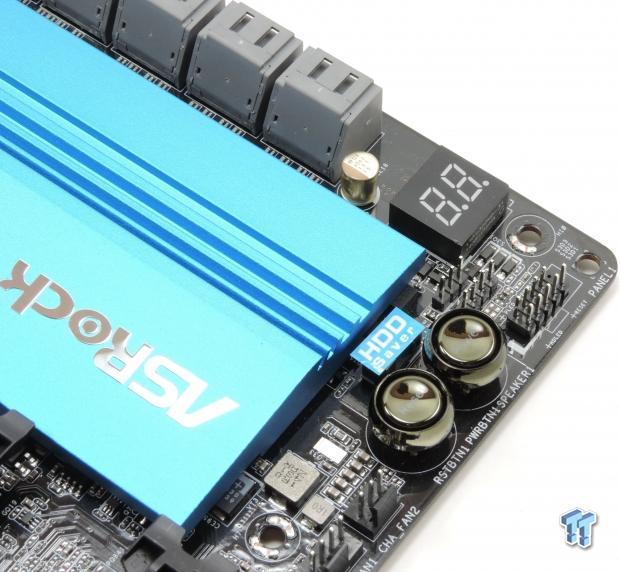
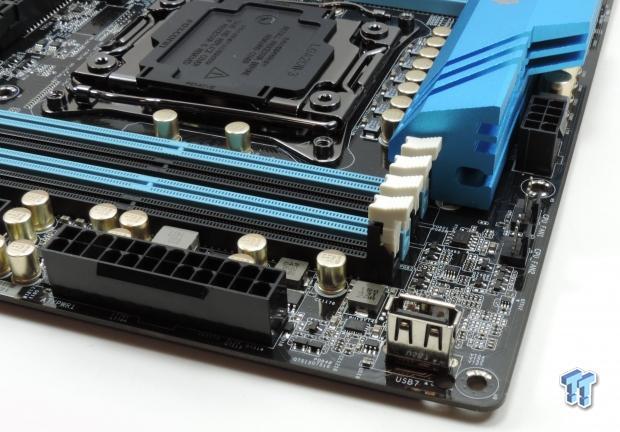
It is nice to see basic OC features like power and reset buttons and a POST code display, that POST code display is basically required for boards in this price region. The image on the right shows the USB DOM connector which can take an authentication key for high-end workstation software.
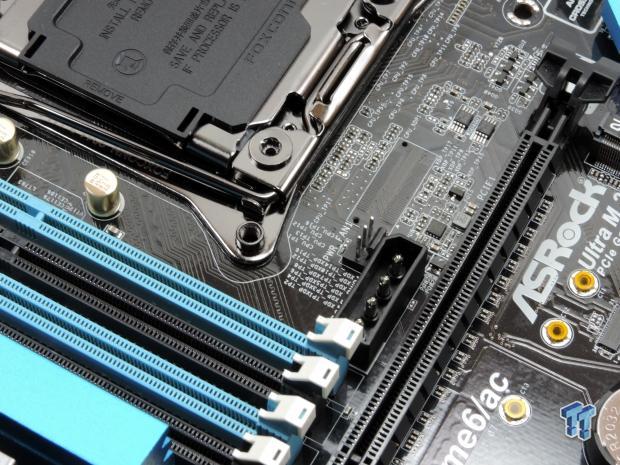
Here is a Molex power receptacle for extra power for the PCI-E slots so that you can run 3-Way SLI/CrossFireX.
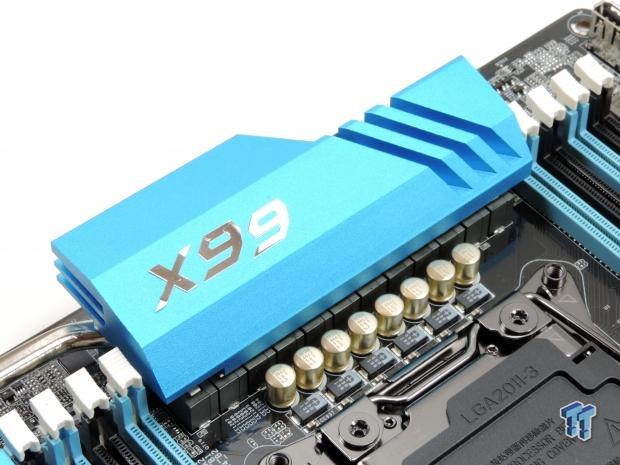
The 12 phase VRM is advertised to be capable of boasting 1300W, and this large heat sink cools it all down.
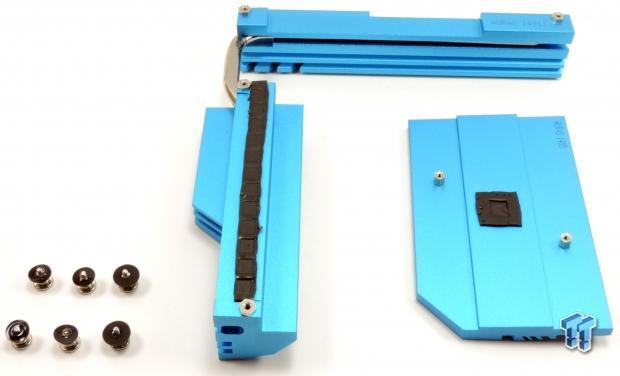
These are the heat sinks, all of them use screws and contact looks great on the VRM and PCH.
X99 Extreme6/ac Circuit Analysis
Circuit Analysis
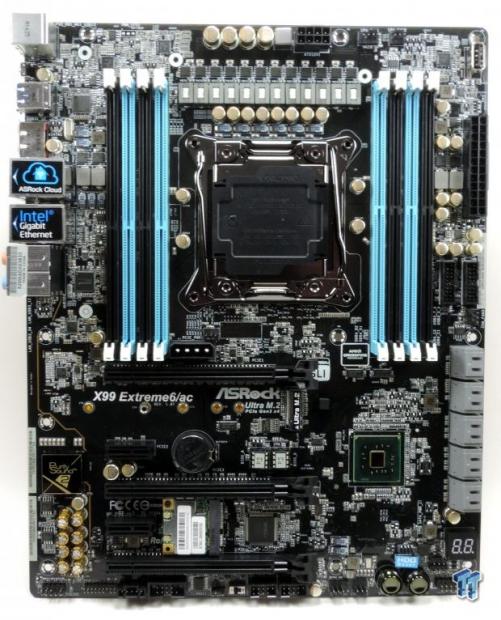
In this section, I will start off with the voltage regulators and then move to other important circuits.
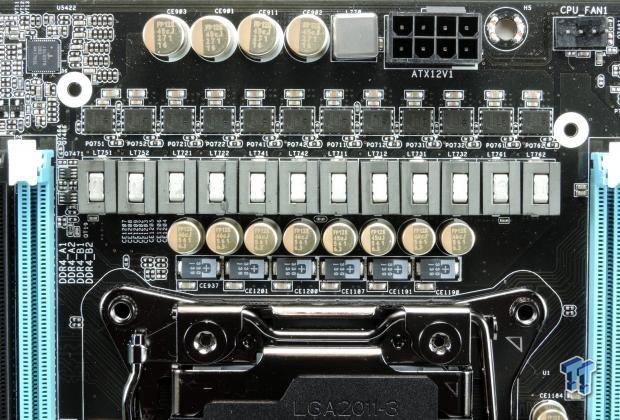
The VRM on this board consists of 12 phases. ASRock has focused on power density by utilizing lower profile 60A inductors and more integrated phases. The output filter is a mix of three different types of capacitors; 8x 560uF solid 12K Nichicon capacitors at 4480uF, 6x 330uF tantalum POSCAPs at 1980uF, and some ceramics. This is roughly 6460uF total and more than enough for strong performance.
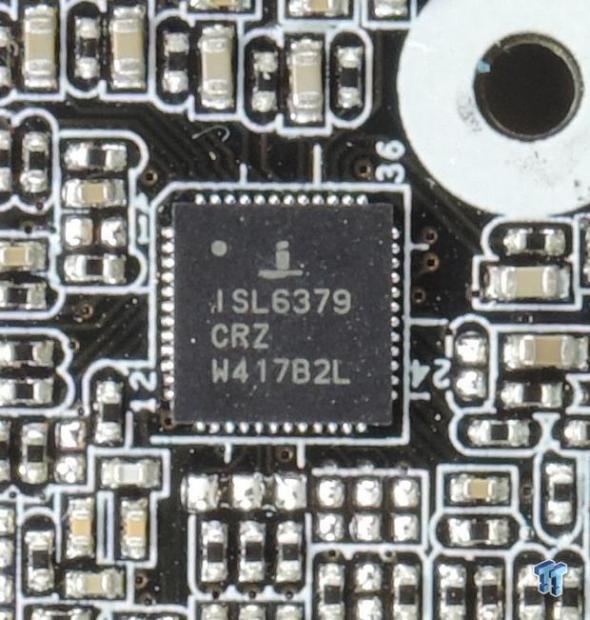

The PWM controller is an Intersil ISL6379 Digitally Controlled Hybrid 6 phase PWM. There is no datasheet, but I would venture to guess that it is a 6+1 phase PWM. To get 12 phases, manufacturers must double the phase count from the PWM, since there is no 12 phase PWM in production for motherboards. ASRock uses 6x Intersil ISL6611A which are phase doublers with integrated dual drivers. This saves a lot of space which is important considering the limited motherboard real-estate of the X99 platform.
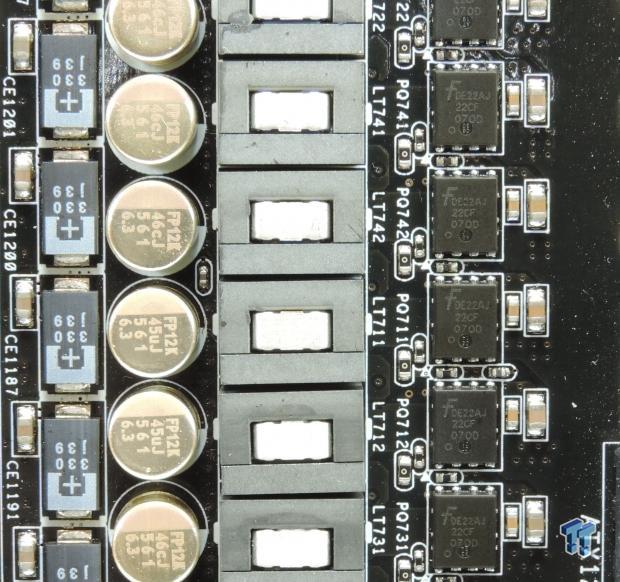
ASRock is using 12x FDMS3668S which are dual N-Channel MOSFETs from Fairchild Semiconductor in the PowerTrench package. They have very good thermal and current ratings at 13A/18A (high/low side) at only 2.5W, which is excellent.
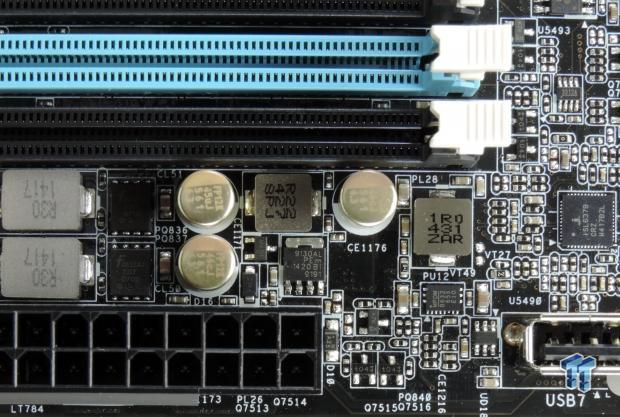
Each memory VRM is like a two phase version of the CPU VRM, using the same ISL6379 PWM and the same dual N-Channel PowerTrench MOSFETs for a total of three ISL6379 and 16 dual MOSFETs on the board. An MPS MPQ8632 is used for the VPP power for each set of the 4 DIMMs.
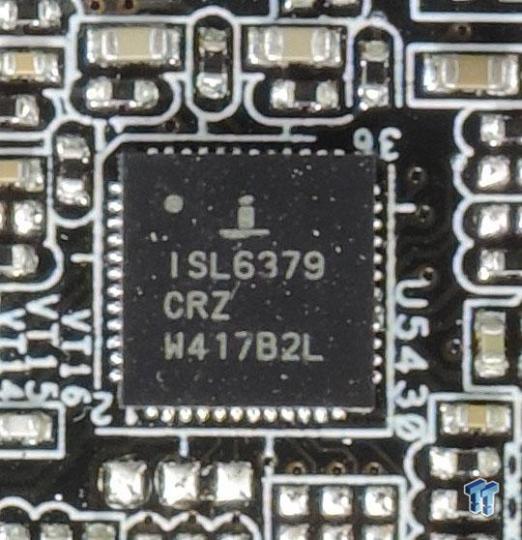
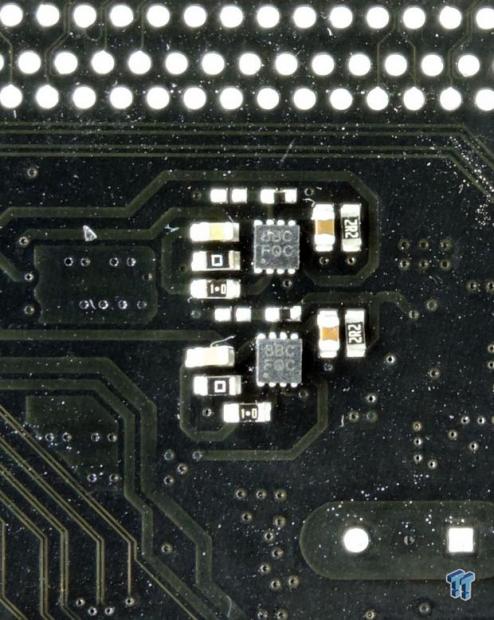
It's pretty amazing that ASRock is using the ISL6379 three times on the board - it is overkill, but should provide very nice voltage control. The memory DIMM's main MOSFETs need drivers and four tiny ones are found on the back of the board. The drivers are Intersil ISL6208.
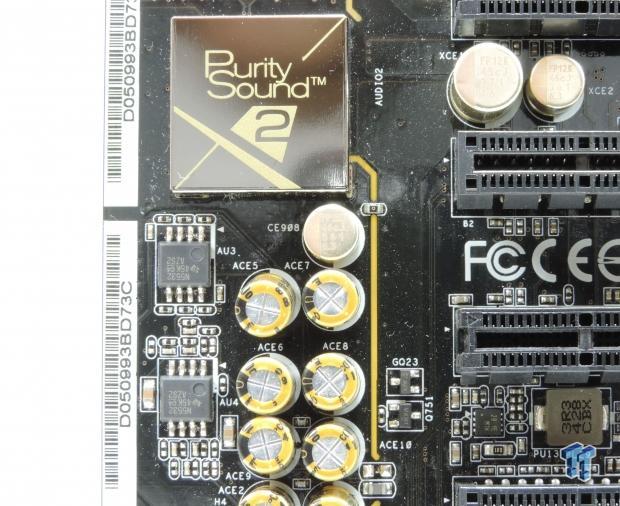
The audio is powered by an ALC1150 which compliments the Intel Azalia processor in the PCH and two Texas Instruments NE5532 are used to amplify the backpanel and front panel audio outputs. Eight Nichicon gold 100uF electrolytic audio capacitors are used for the analog domain and the audio circuitry is isolated to reduce noise.
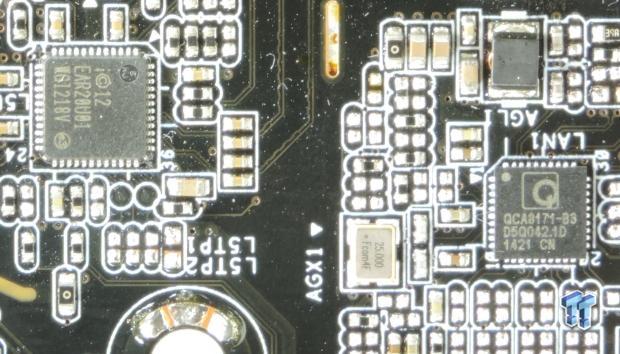
The X99 Extreme6/ac has two wired NICs, one utilizes Intel's i218v and the other is a Qualcomm Atheros QCA8171, which is very similar to Killer e2201, just without the special software layer.
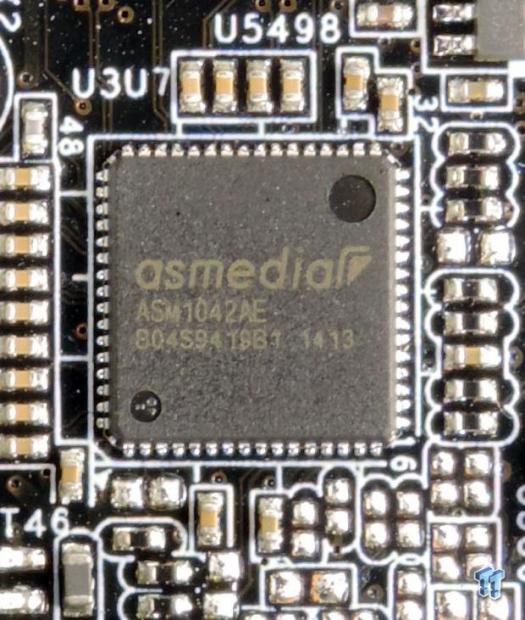
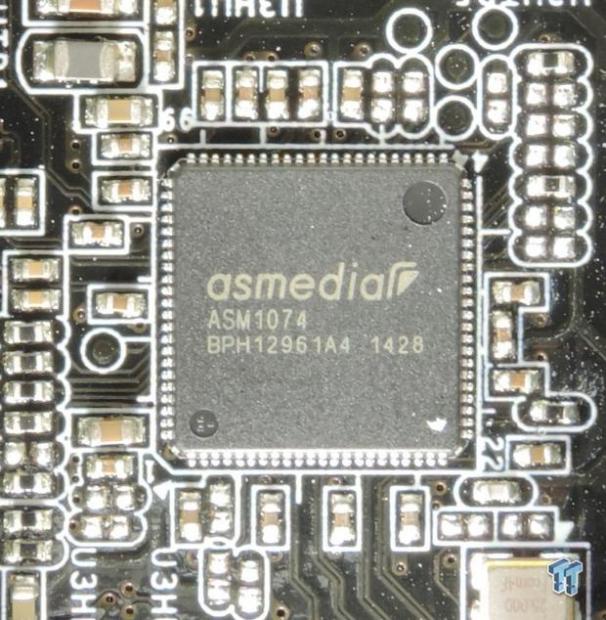
An ASMedia ASM1042AE provides two USB 3.0 ports from a single PCI-E lane for the two northernmost USB 3.0 ports on the back panel IO, and an ASMedia ASM1074 is a USB 3.0 hub controller which takes one USB 3.0 port and expands it into the four USB 3.0 ports on the back panel. The internal USB 3.0 headers are directly connected to the Intel PCH.
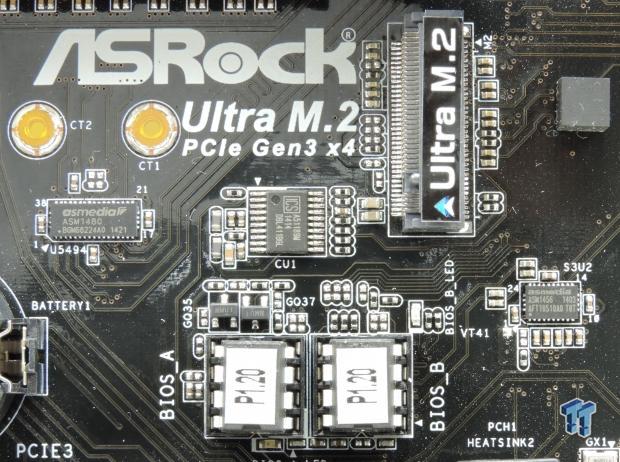
The Ultra M.2 slot will take its bandwidth from the last 16x slot through two ASM1480 quick switches which are wired to the CPU's PCI-E 3.0 controller. It can provide up to 20GB/s bandwidth, however, for SATA based M.2 drives, the Ultra M.2 port needs an SATA link to the PCH which is provided through SSATA3_2 and an ASM1456.
An ASMedia 1480 switches bandwidth from the SSATA3_3 port to the eSATA port on the back panel. This switching is all sound and performance won't take a hit as ports are just being traded and not shared.
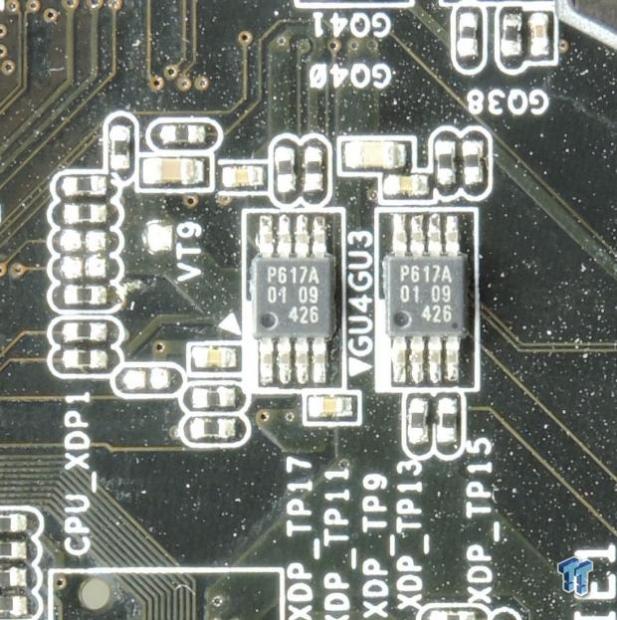

Like I saw on another server type X99 motherboard, there is hardware to support Intel Xeon processors. In this case, two NXP PCA9617A provide level shifting between low and high voltage I2C and SMBus busses and provide ESD protection. I also wanted to point out ESD protection for the USB 3.0 internal headers in the image on the right.
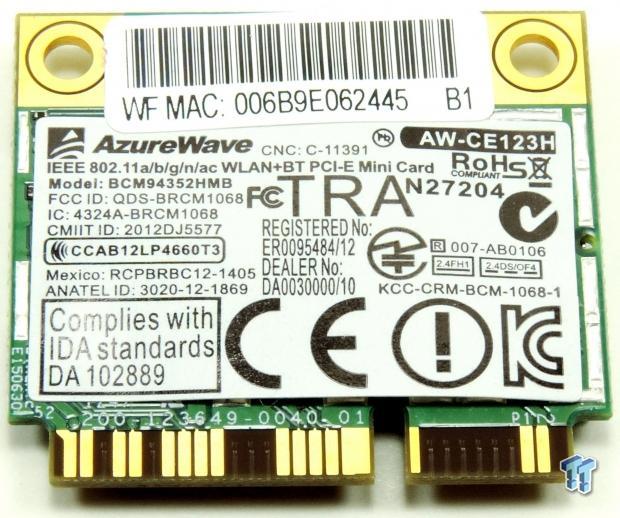
This is the wireless AC/BT 4.0 mini PCI-E card that comes with the board. It is an AzureWave BCM94352 which is made by Broadcom. The Wireless AC is 2x2 which means speeds of up to 867Mb/s.
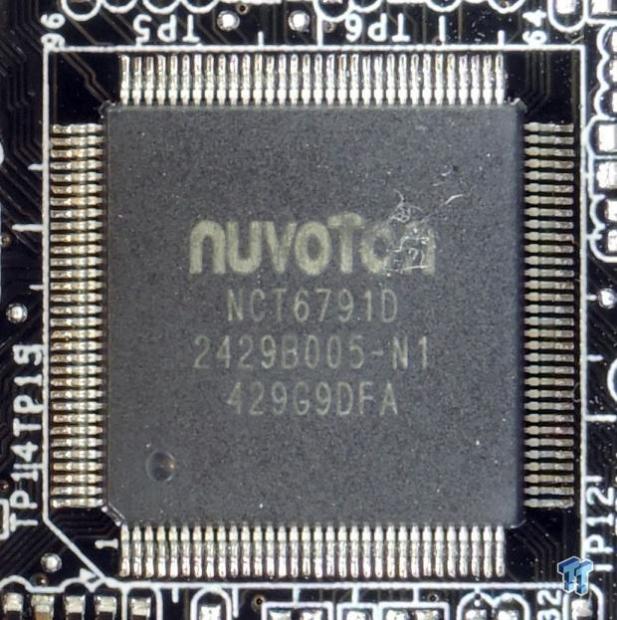
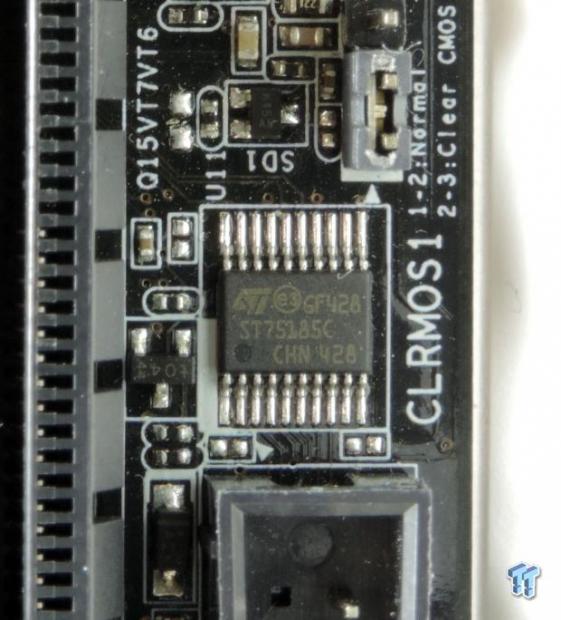
A nuvoTon NCT6791D provides SuperIO functionality and the PS/2 port on the backpanel. An STMicro ST75185 provides drivers and receivers for the COM port.
BIOS and Software
BIOS
ASRock's UEFI it's quite extensive and provides a large variety of options for tweaking. If you are a novice overclocker, there are also profiles in the UEFI for 4GHz with XMP and other higher speed overclocks. Since the release of the X99 chipset, ASRock has made improvements to allow the use of turbo multipliers without EIST enabled, as EIST can hurt storage performance.
A trick that another editor at TweakTown taught me is to go into the storage configuration and set each drive to SSD mode if it's an SSD, because by default, the ports are set to HDD mode for compatibility. Changing the drive mode to SSD will improve SSD performance. I found by manual measurement that LLC level 3 gives the least deviation from the set voltage. I do want to mention that the X99 Extreme6/ac is one of a handful of motherboards that had no problem recognizing all my drives at the same time and correctly booting the boot drive.
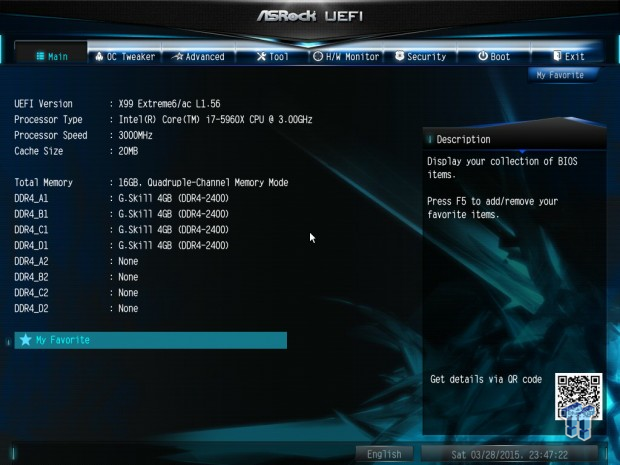
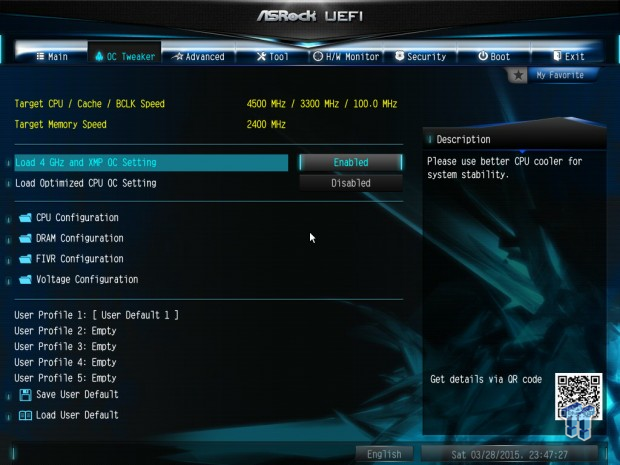
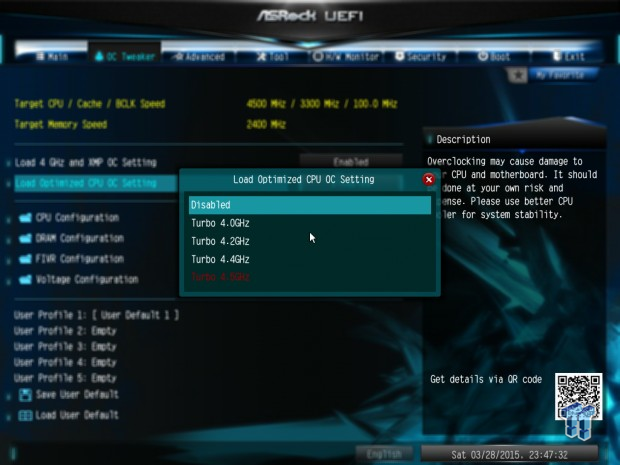
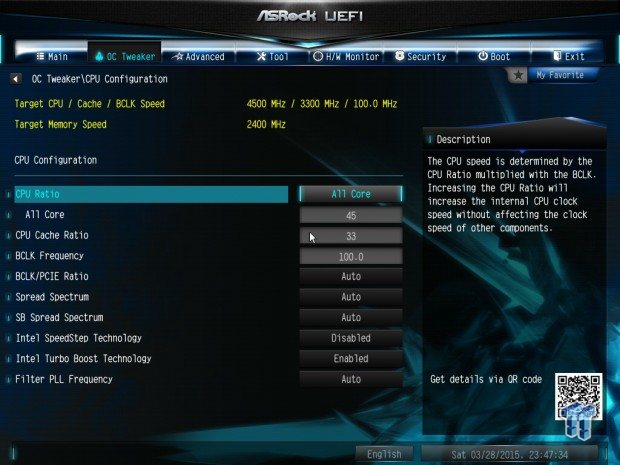
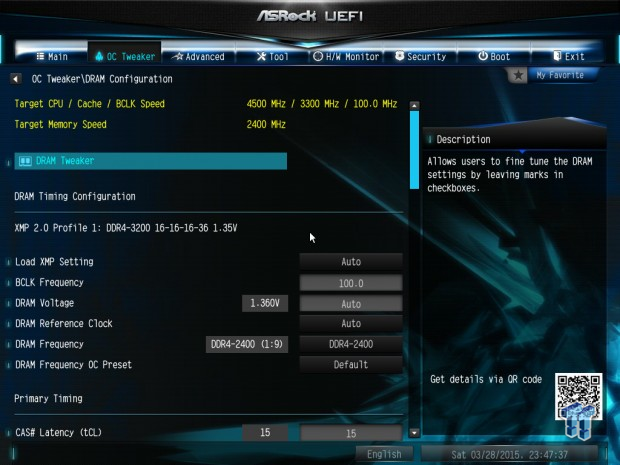
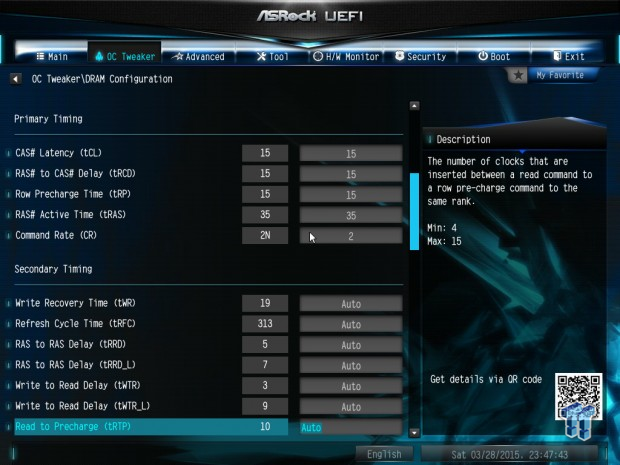
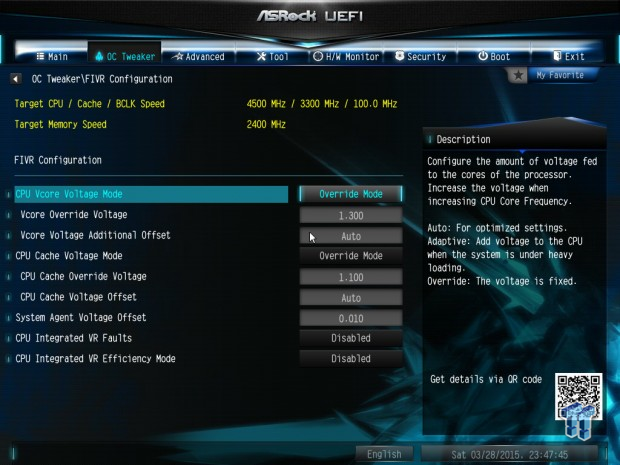
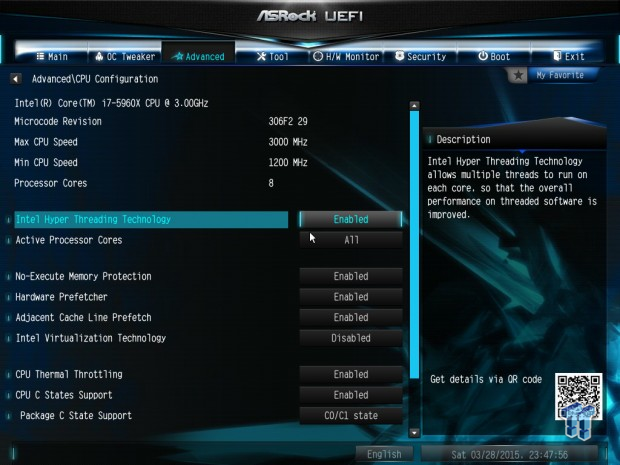
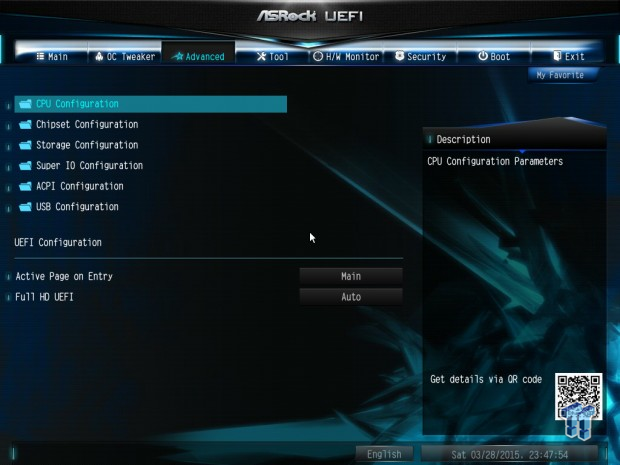
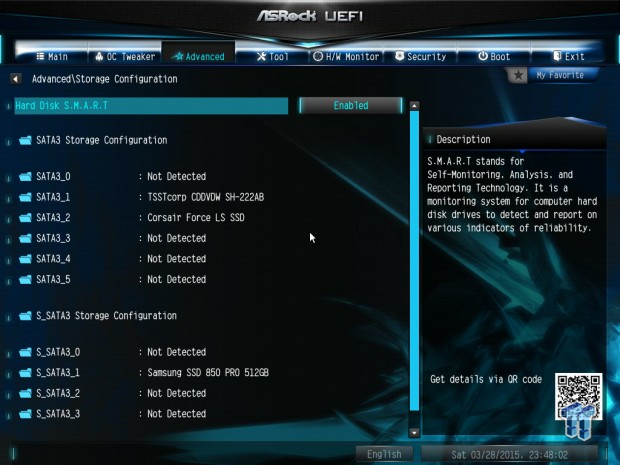
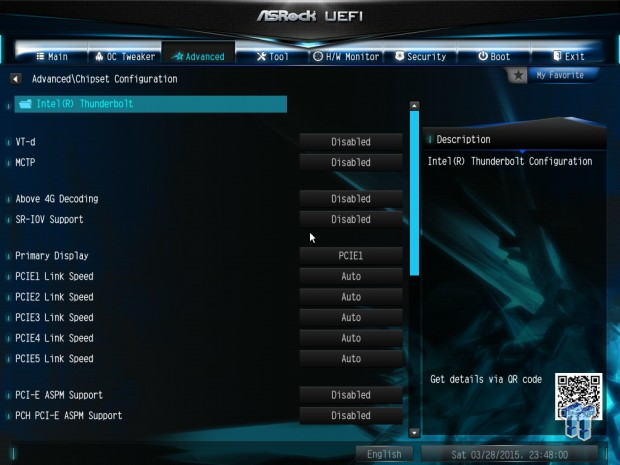
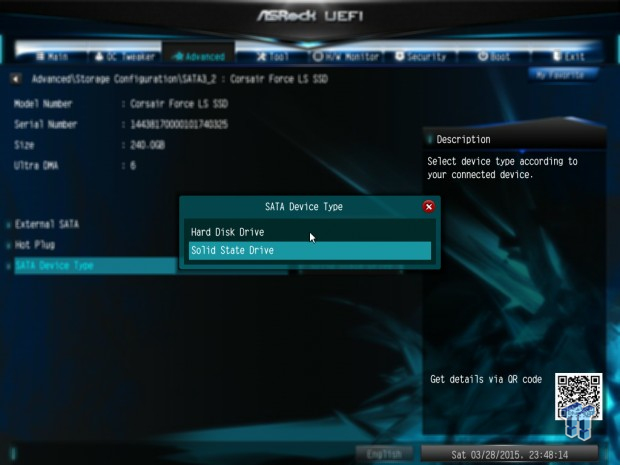
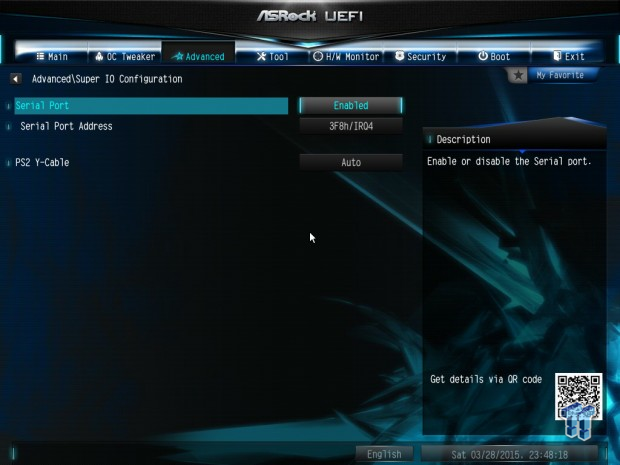
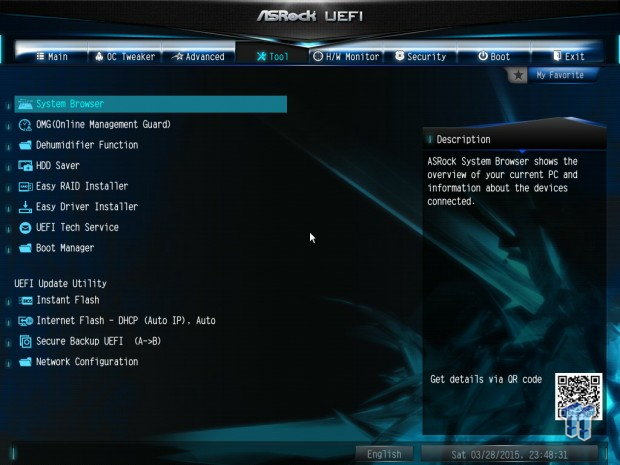
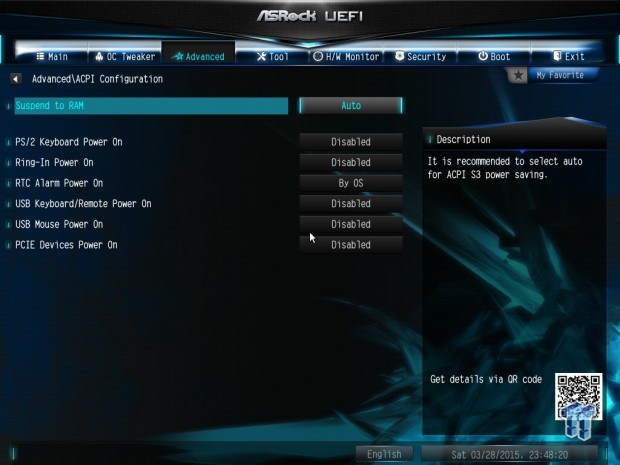
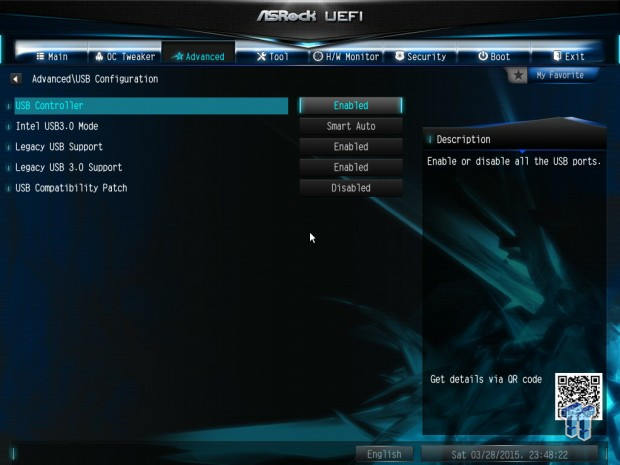
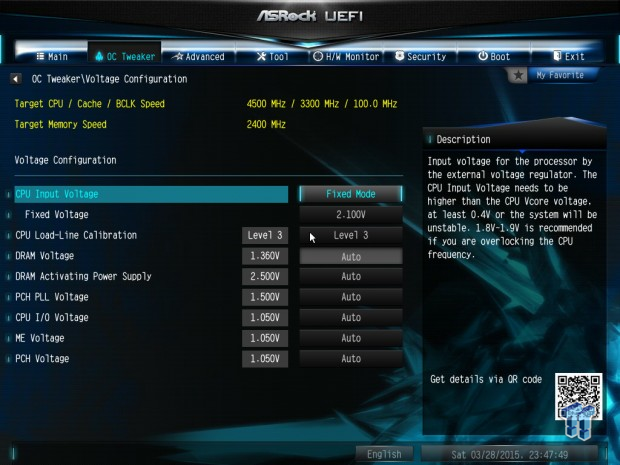
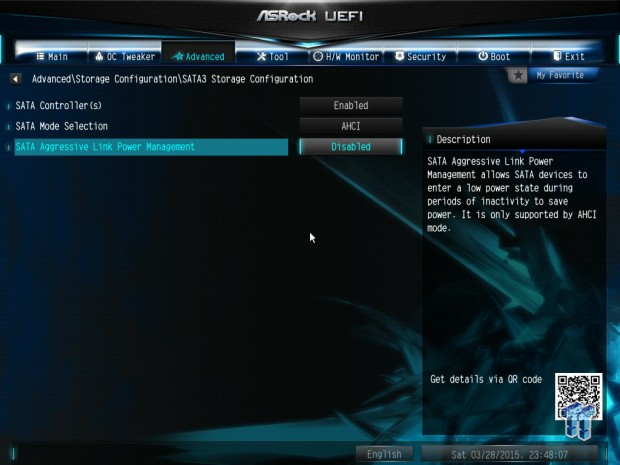
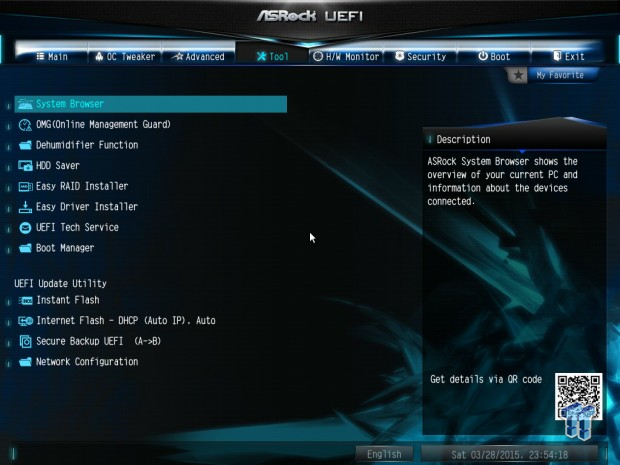
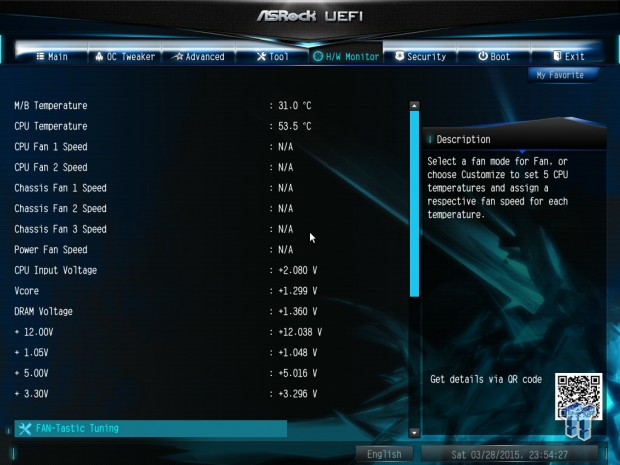
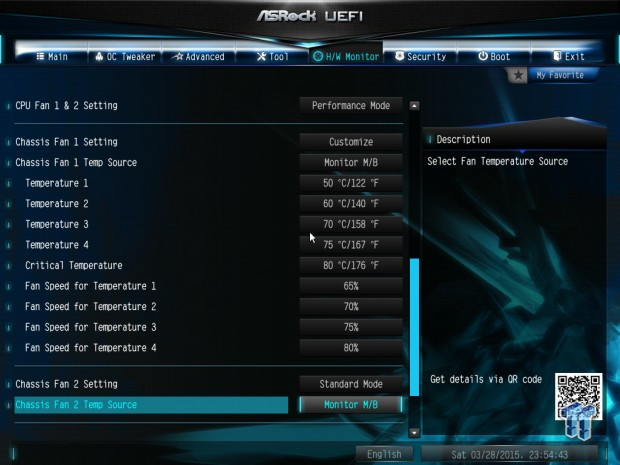
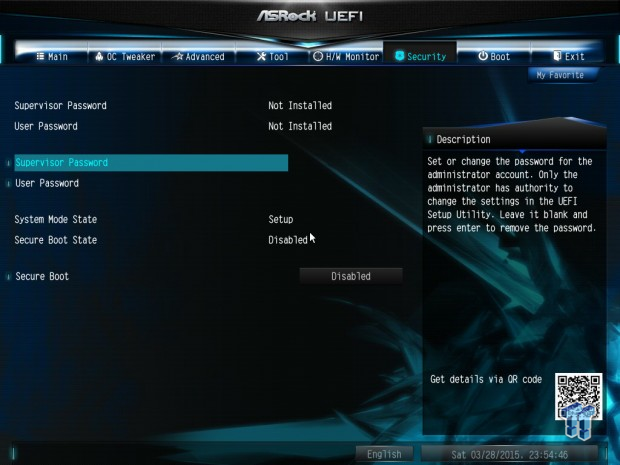
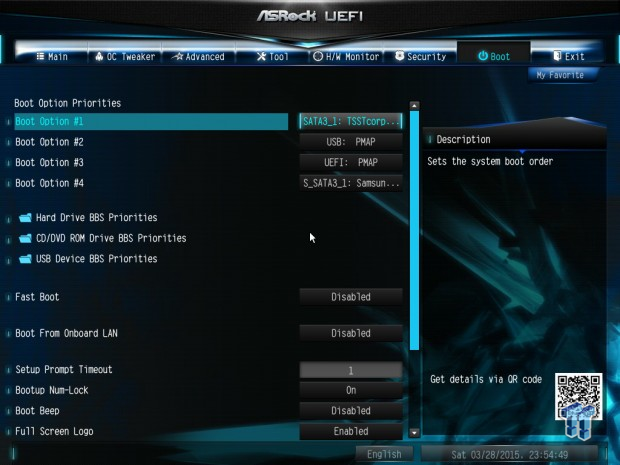
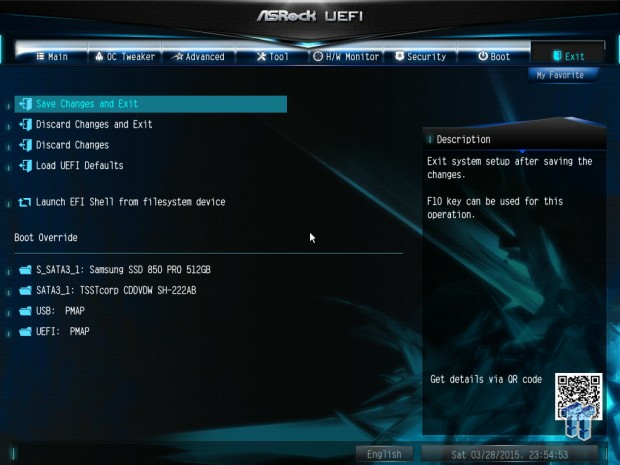
Software
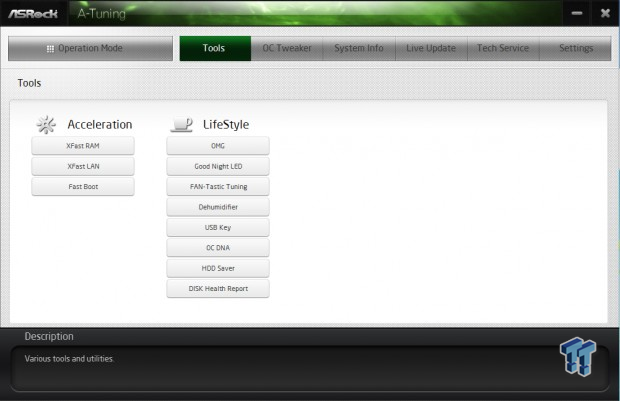
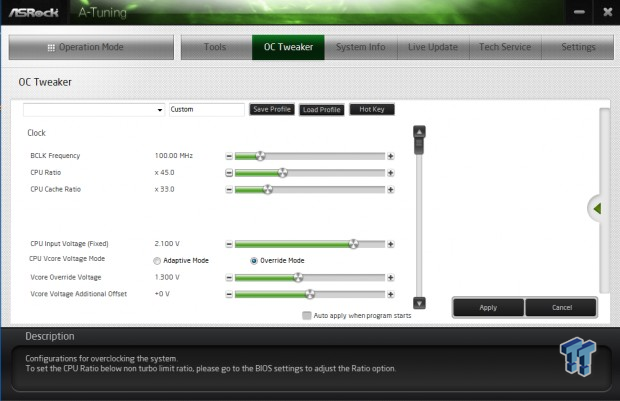
ASRock has consolidated a lot of its software into A-Tuning, which will let you set up functions like Good Night LED and Dehumidifier, while allowing you to overclock the CPU in real-time.
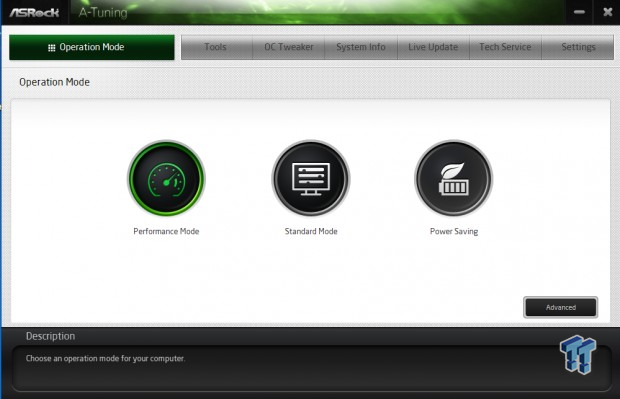
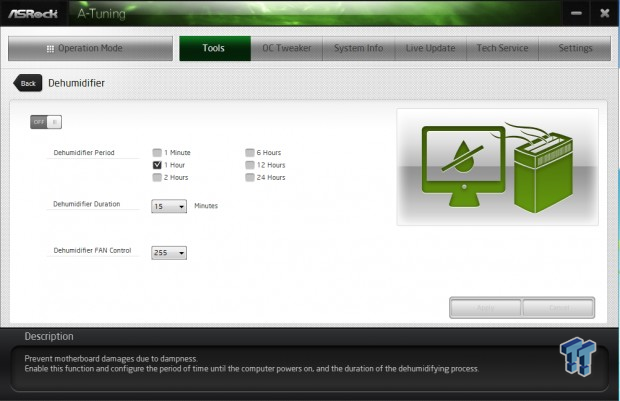
You can also choose operation modes such as performance or power saving.
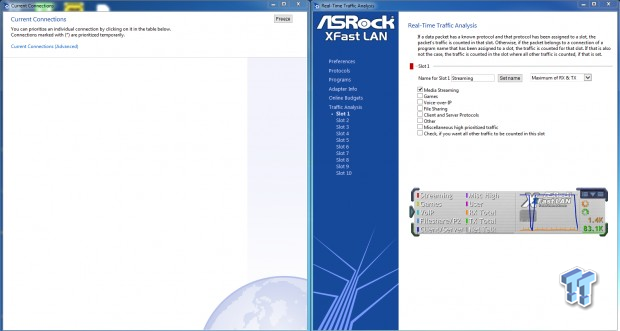
Here is ASRock's XFast LAN, which is similar to CFOS, for the Intel port. ASRock's Home Cloud is also provided for the Atheros NIC.
Test Setup and Overclocking
Test Setup
A big thanks to Corsair for sponsoring the case, fans, SSD, USB drive, and PSU!
A big thanks to Seek for sponsoring the Thermal Camera. You can find my review of the camera here.
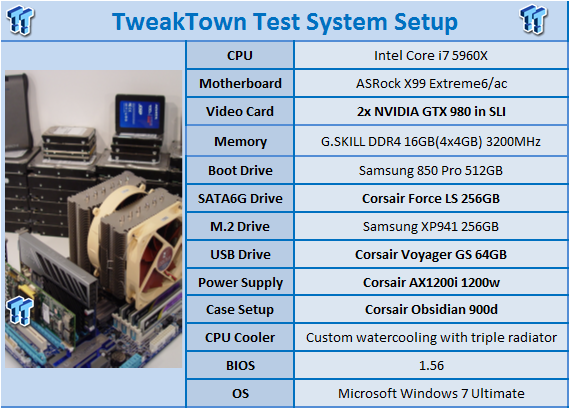
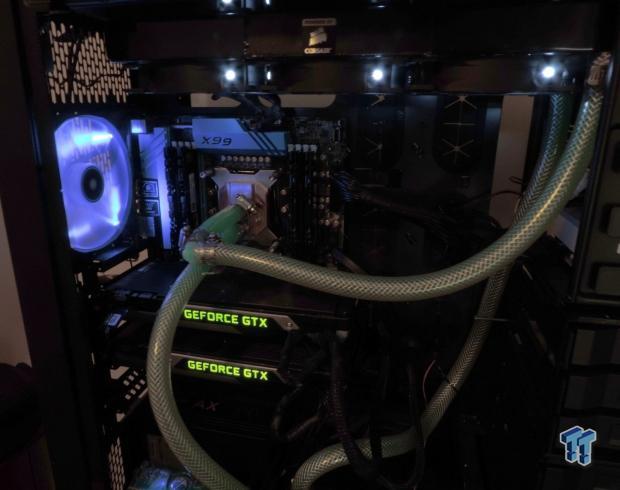
This is the new test bench, and it is designed to test every aspect of the motherboard and IO. I have designed it so that the motherboard sits in a case and is cooled by fans always on at a constant rate to keep the conditions similar for all tests. I have cut out part of the case behind the motherboard so I can get thermal images of the back of the PCB where the VRM heat spreads. System and CPU power measurements are now digitally logged.
I am also using a Netgear Nighthawk X4 AC2350 for our network (including wireless AC) tests. The latest M.2, SSD, and USB technologies are also being utilized to test the maximum potential of the motherboards that are being tested.
Overclocking Results
In this section, I will go through overclocking this board.
CPU Overclocking
Max CPU Overclock is found by setting the VCore to 1.5v, Input voltage to 2.1v, cache voltage to 1.15v, booting with a CPU multiplier of 45x and disabling any features that would result in CPU frequency fluctuation. I then proceed into Windows and use software to increase the multiplier; in this case I opted to use A-Tuning.
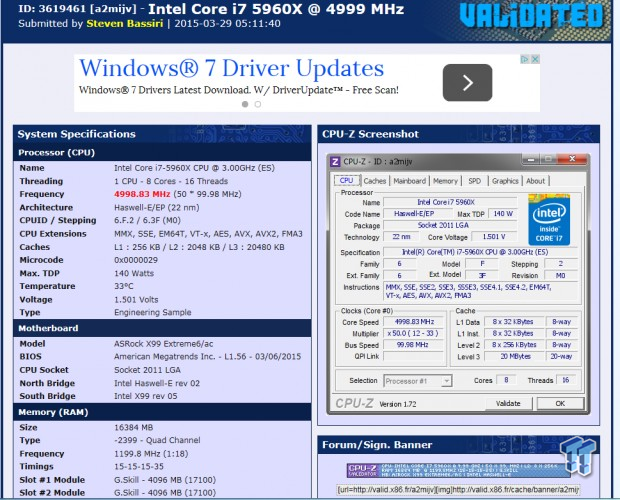
5.0GHz is the maximum of our CPU on this board and other X99 Motherboards. It is clear that CPU overclocking is pretty good for high frequency.
Maximum AIDA64 Stable Overclock (BIOS settings below for this):
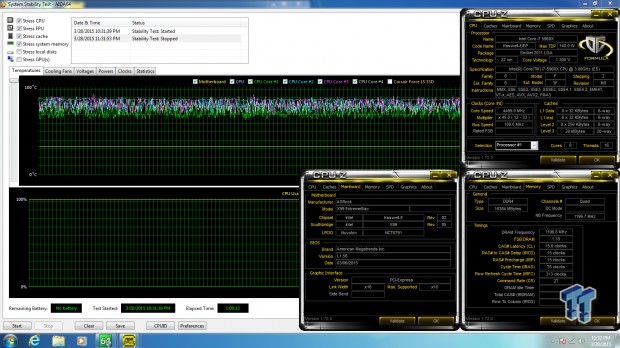
I was easily able to pull off 4.5GHz on the CPU with 3.2GHz cache and a 2400MHz overclock on my memory manually tuning the UEFI.
CPU, Memory, and System Benchmarks
CINEBENCH 11.5
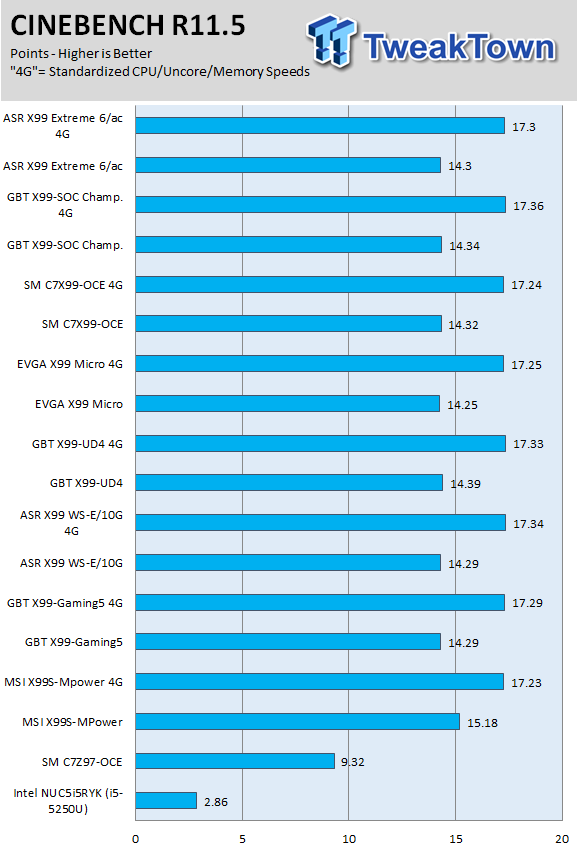
wPrime
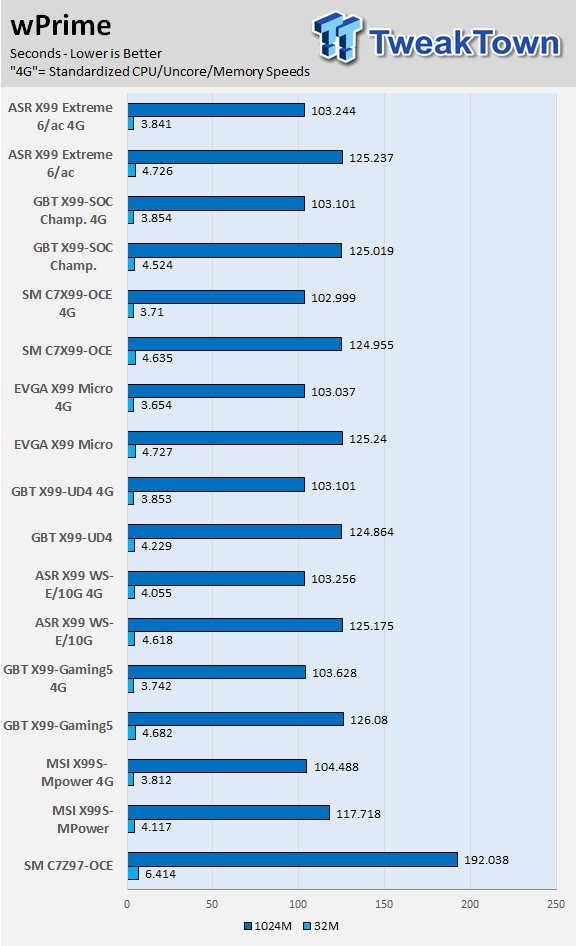
AIDA64 AES and HASH
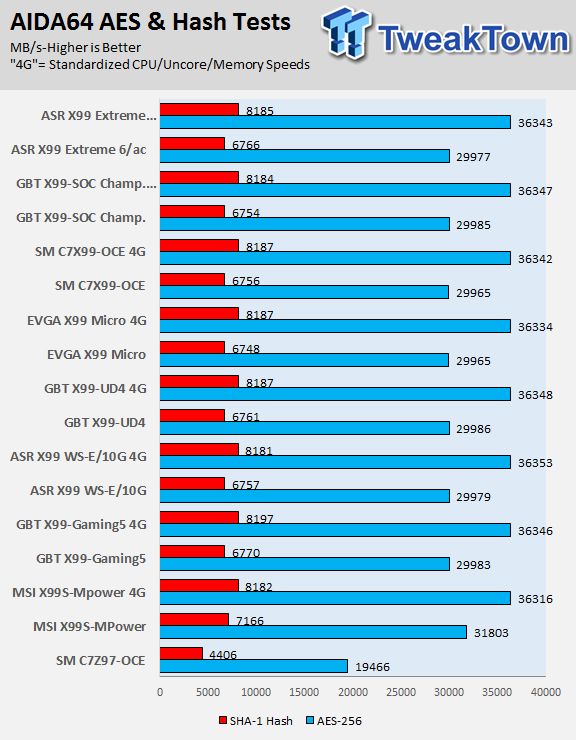
AIDA64 FPU
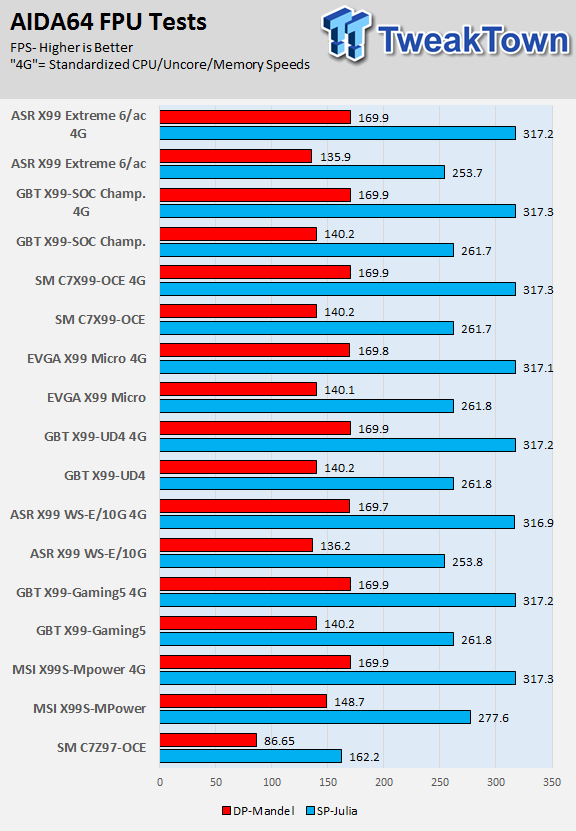
AIDA64 Memory
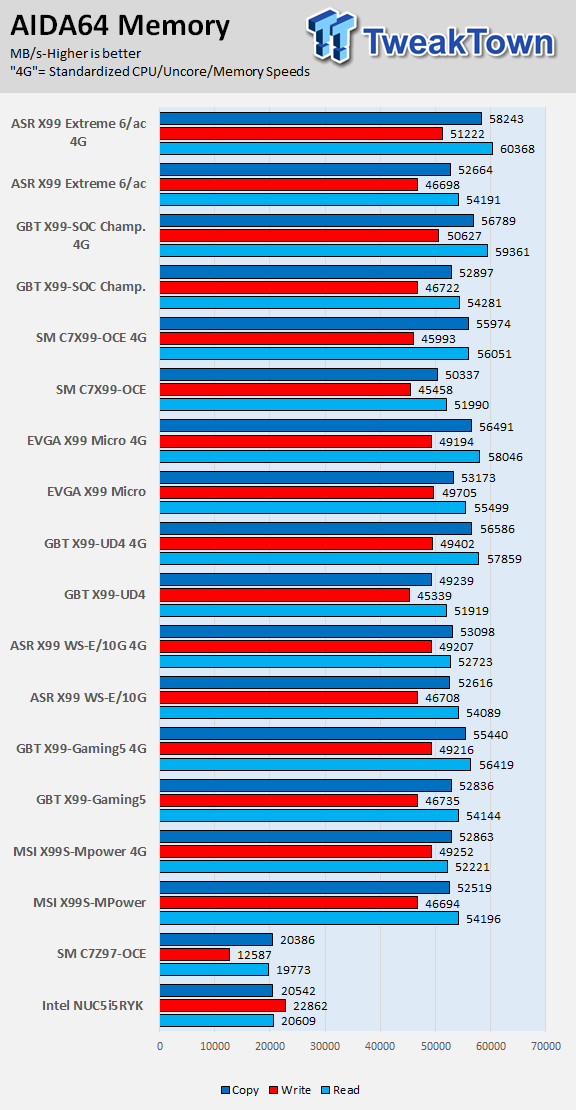
PCMark8 Home Test
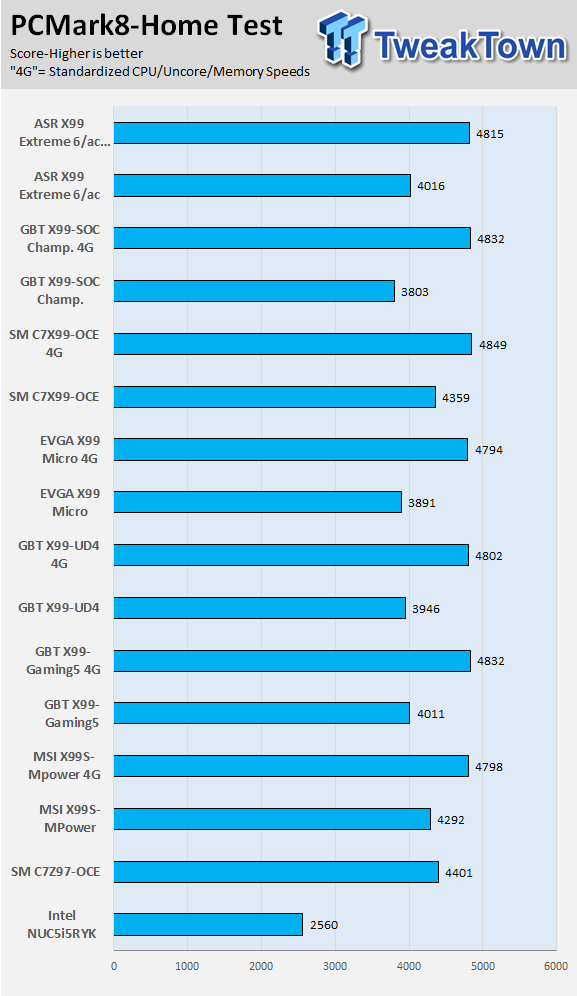
3DMark: Cloud Gate
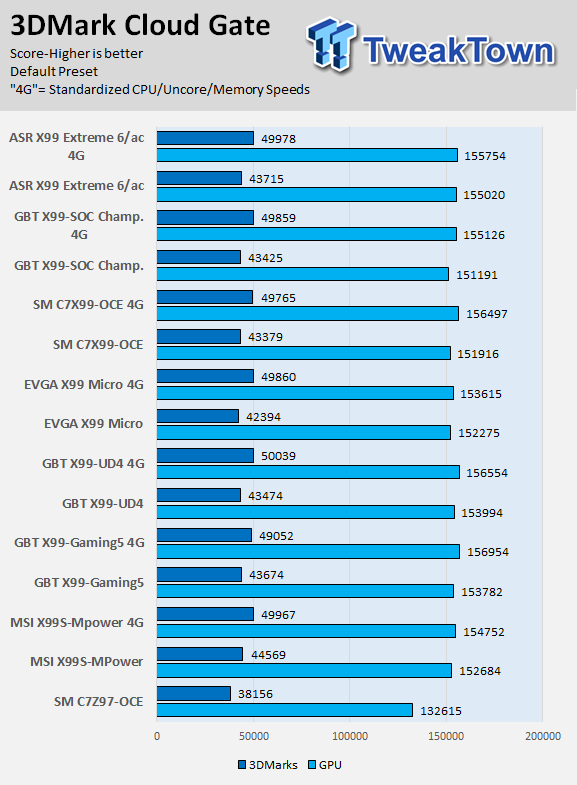
3DMark: Fire Strike

Resident Evil 6
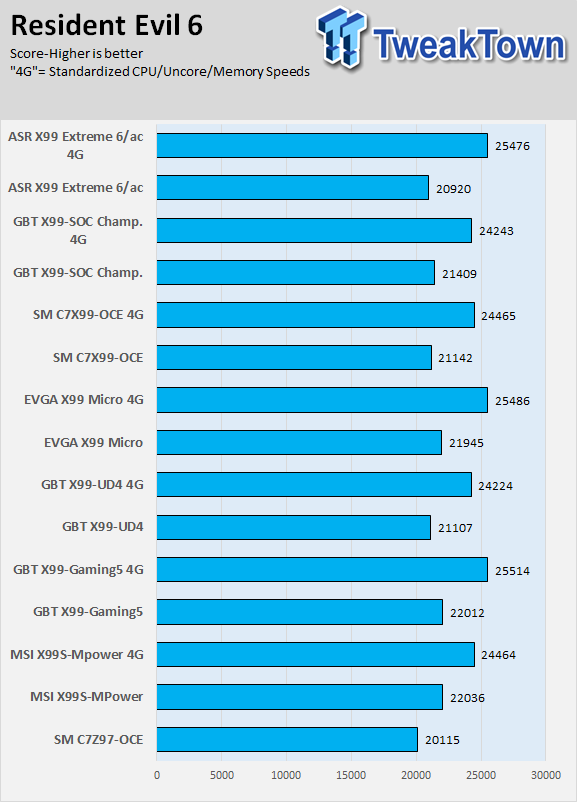
The X99 Extreme6/ac performs very well in memory and 3D performance benchmarks. The GPUs are directly wired to the CPU on the X99 Extreme6/ac which would explain the strong 3D performance. Overall, there are no performance issues with the board, and it is in the top 10% in almost every category.
System IO Benchmarks
Anvil SATA6G:
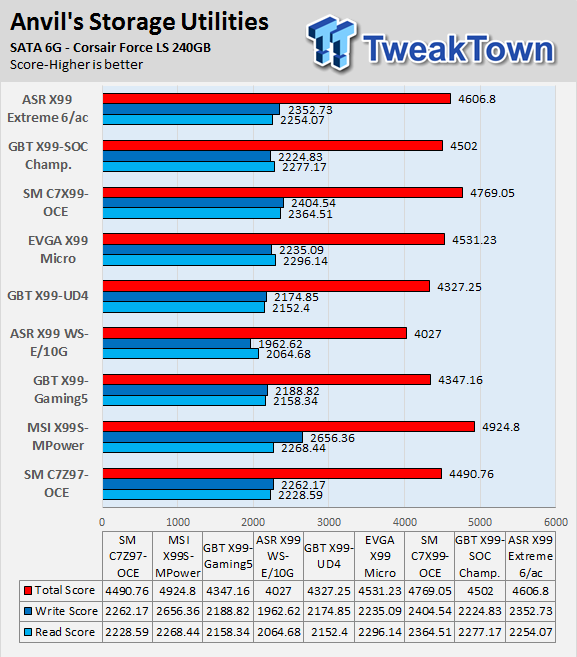
Anvil M.2:
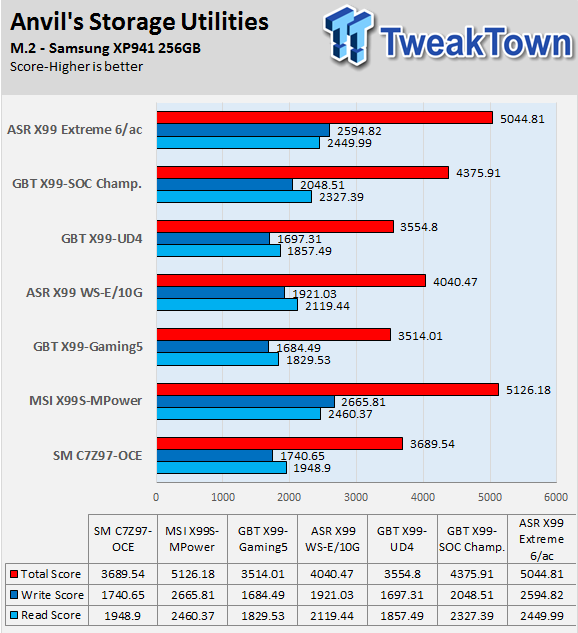
Diskbench USB 3.0:
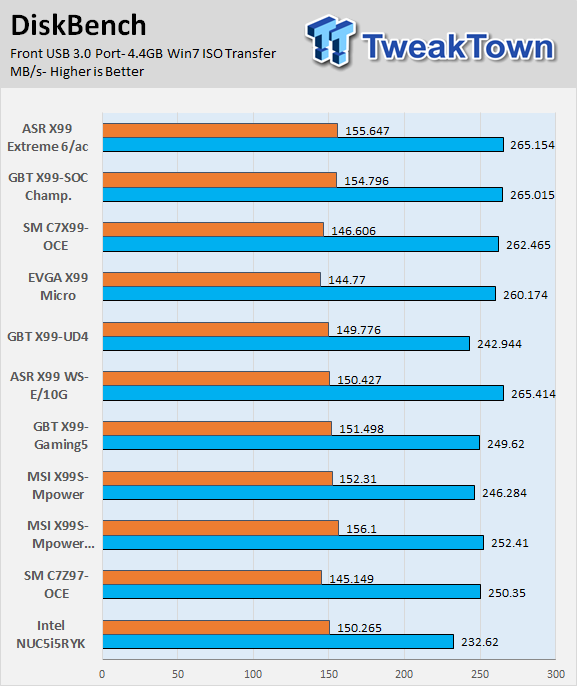
ixChariot Network Throughput:
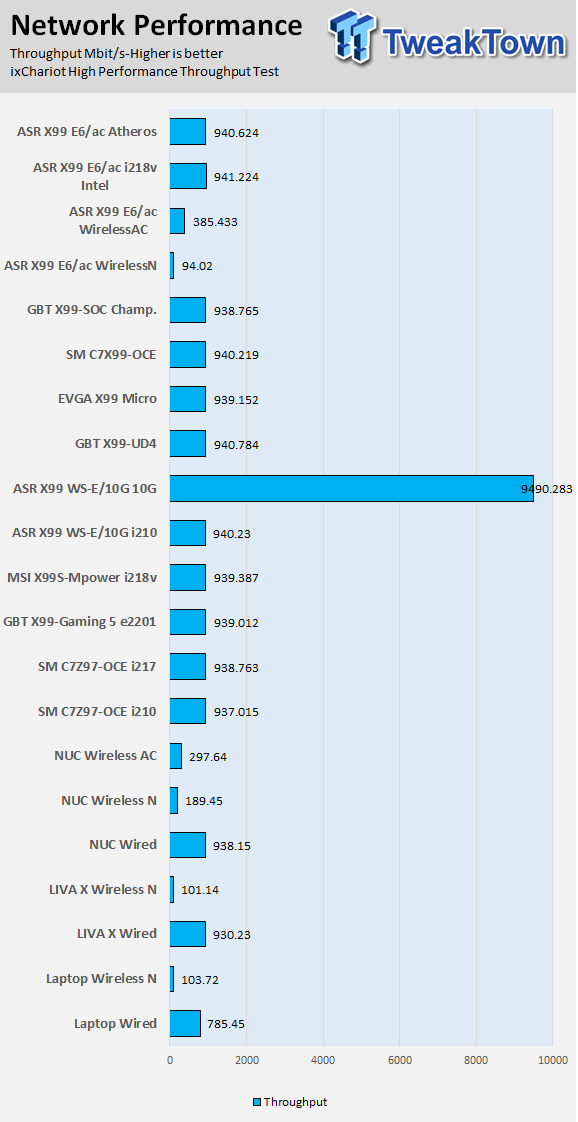
IO performance is excellent, especially the M.2 and USB 3.0 performance. Network performance with either wired NIC is at the top, but the wireless AC performance is the best. This isn't the first wireless AC device I have tested, but it is so far the fastest.
Audio RMAA 5.5:
I disable all audio features, set the correct bitrates, and then test the audio with a loopback test.
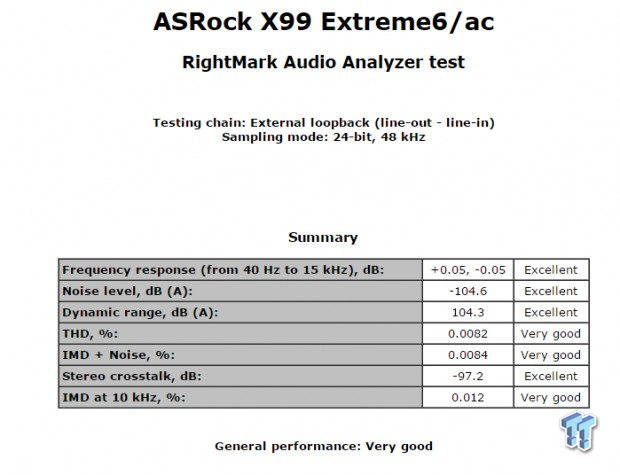
Sound Judgment by Ear: Very Good.
There are 5 ratings for audio: 1. Problems, 2. Okay, 3. Acceptable, 4. Very good, 5. Excellent
Temperature and Power Consumption
System power usage is measured at the AC/DC PSU (the Corsair AX1200i) which I have connected to another system to measure the test system and as a backup I have a wall meter to verify. The CPU power is measured through the 8-pin connect which is hooked up to a hall effect IC which measures current and puts out a voltage in proportion to the current. That voltage is logged by a National Instruments ADC which logs the DC voltage level, which I then convert into current.
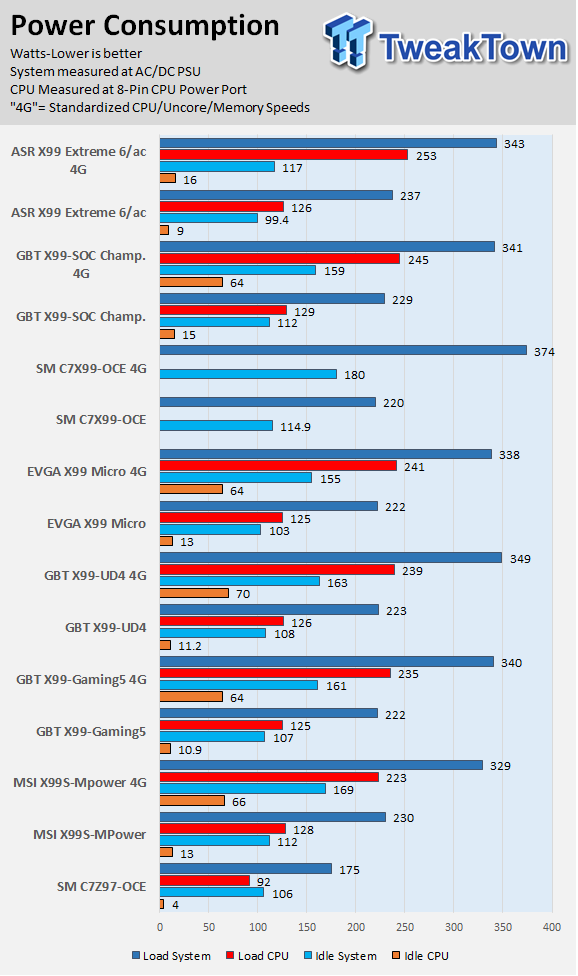
Note on Thermal Images: In the temperature section, we use our Seek thermal imaging camera to capture the surface temperatures of major components on the board; I look at the VRM and then all other things that light up the screen. If there is something to worry about then I will state it, otherwise I will just show the hotter running parts of the board for fun. Unless some component is over 80-90C then there really isn't anything to worry about.
All systems will act differently, so I will look for commonalities, such as how far from the VRM the heat spreads through the PCB and the difference in temperature between the frontside and backside of the PCB. Keep in mind that the majority of the heat from the VRM goes into the PCB as it is a giant soldered on copper heat sink. A smaller difference in temperature between the back and front of the PCB points towards a more effective heat sink.
Thermal Testing at Stock Speeds:
The image on the left is always at idle and the image on the right is at load.
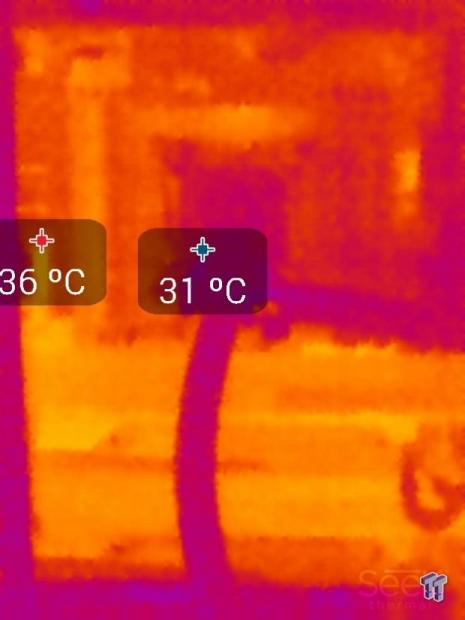
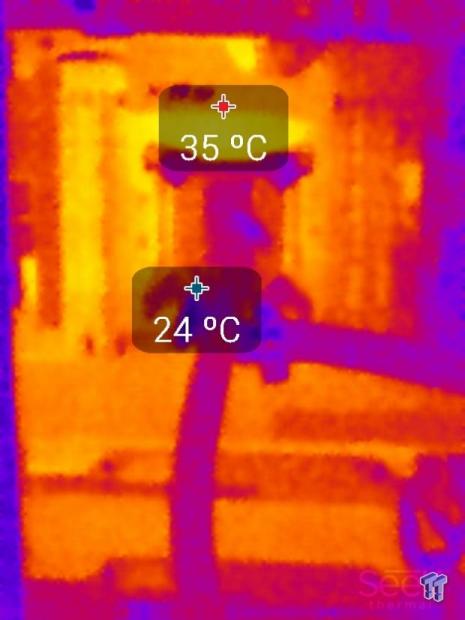
Full frontal.
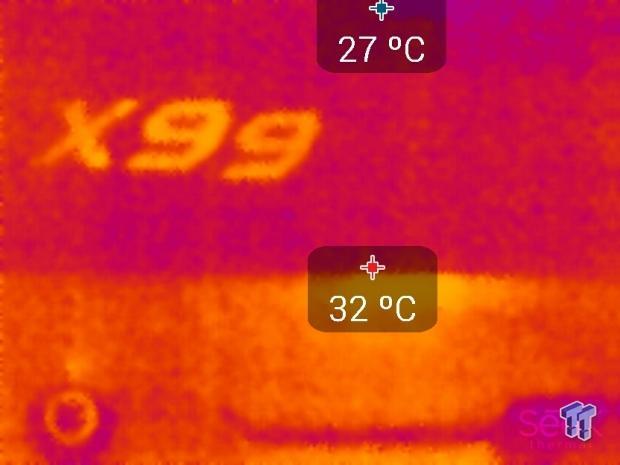
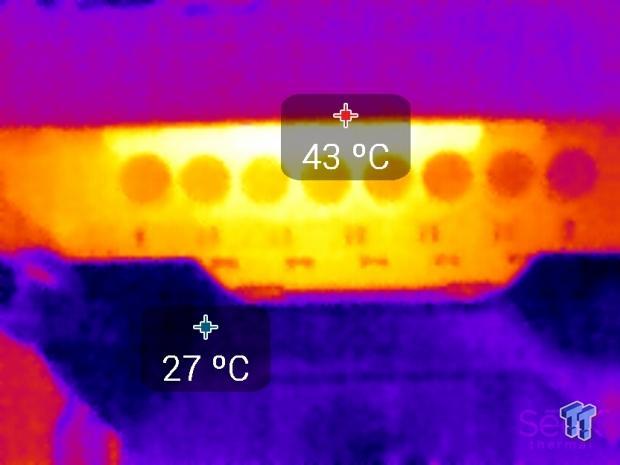
Up close of the front of the VRM.
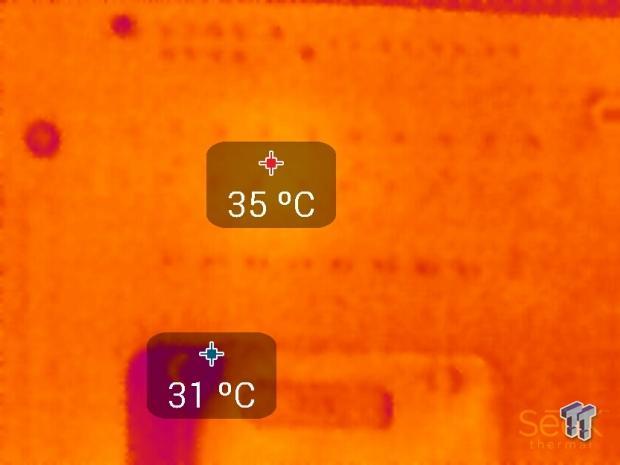
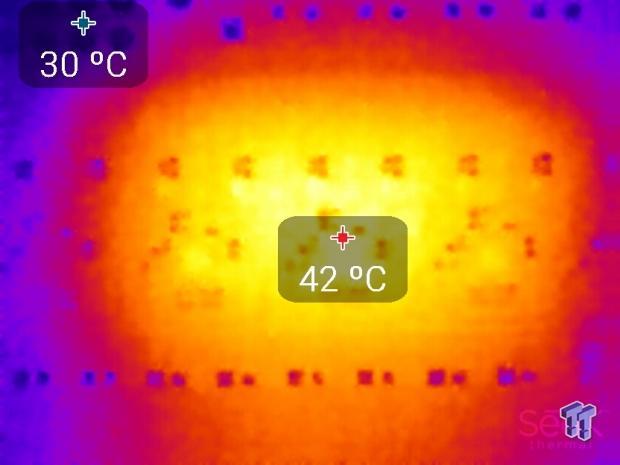
Up close of the back of the VRM.
Thermal Testing at 4.5GHz Overclocked Speeds:
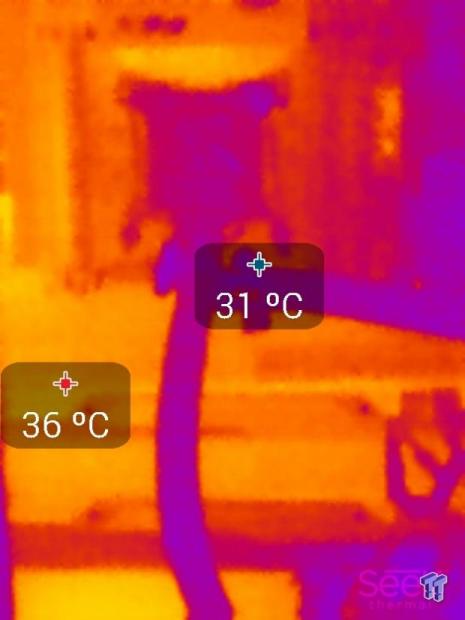
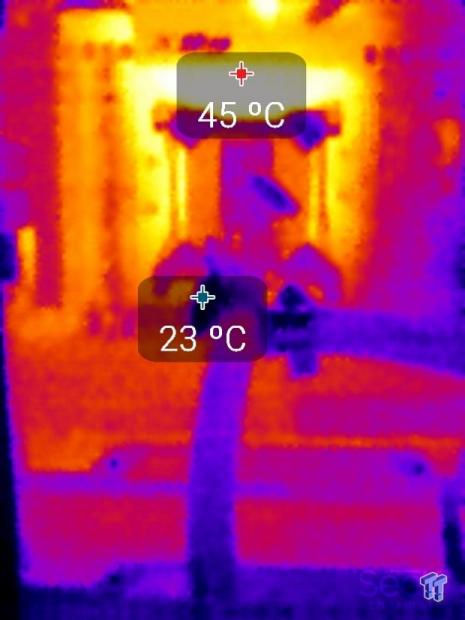
Full frontal.
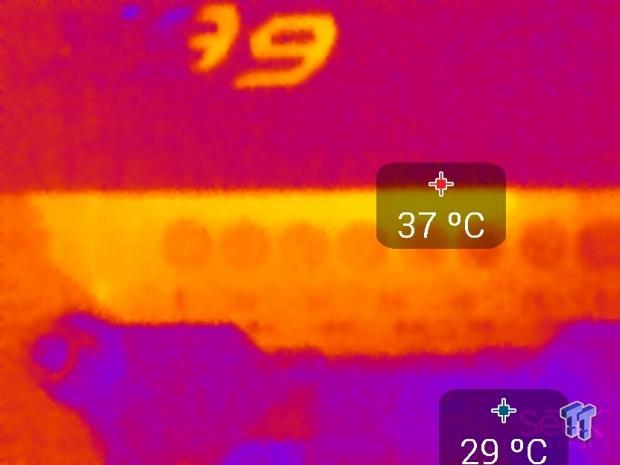
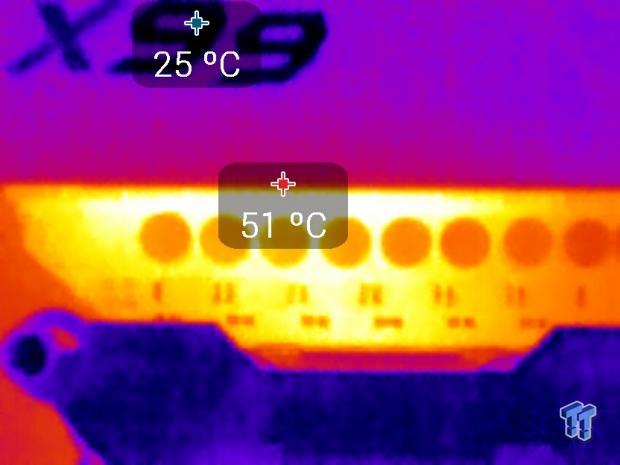
Up close of the front of the VRM.
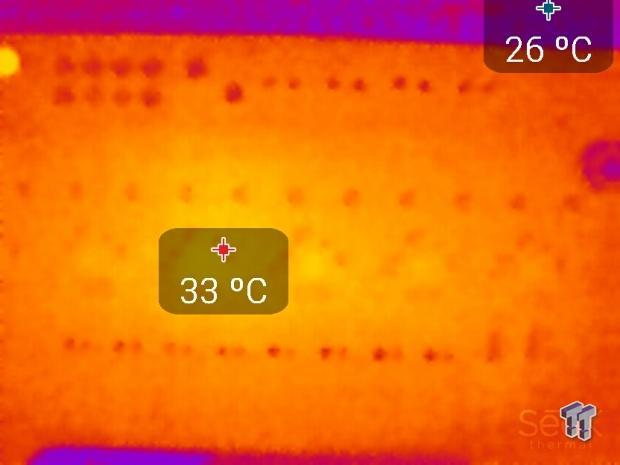
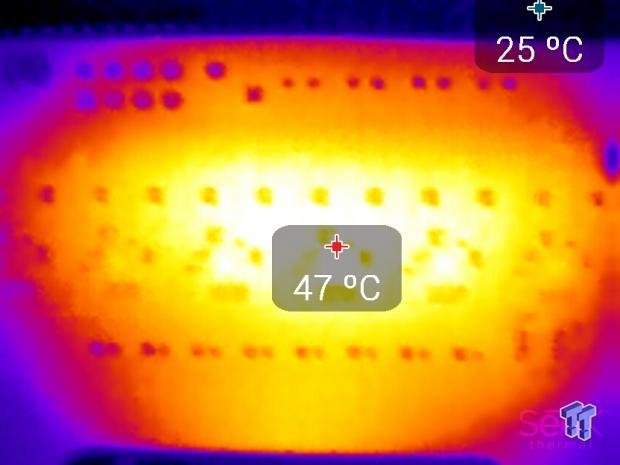
Up close of the back of the VRM.
The VRM on the X99 Extreme6/ac is very well equipped to handle high current loads, and the heat sink is equally effective at removing heat from the VRM. At full load the front is always hotter than the back of the PCB and never goes above 60C, which puts it in the excellent category when it comes to VRM performance.
If you look closely at idle thermals at stock, you can see that the Intersil PWM shuts off all but 1 phase (2 when doubled) to reduce heat and improve efficiency. Overall, the VRM performs great in thermal testing.
Final Thoughts
The ASRock X99 Extreme6/ac is a really feature packed and well performing motherboard. Its hardware is well implemented and its workstation features such as a USB DOM, and Intel Xeon CPU and 128GB DDR4 support are unique. ASRock is also the only manufacturer who uses 12K capacitors; most others use 5, 7, or 10K. The VRM on the X99 Extreme6/ac is very strong and won't hold you back on any overclock, even with the 8-core 5960X.
VRM thermals are also pretty good and idle performance is among the best I have seen thus far. The UEFI is easy to use and the included profiles make for a good starting point if you are new to overclocking, just make sure to optimize SSD performance as it isn't optimized by default.

While the Ultra M.2 slot provided the second fastest run so far with the Samsung XP941, it does take its bandwidth from the last PCI-E 3.0 16x slot, which reduces the multi-GPU capability of the board if running 3-Way. The lack of 4-way GPU support is a bit surprising, but this motherboard is aimed more towards workstations, and ASRock offers other boards with 4-way support. At $279.99, the X99 Extreme6/ac offers great value, especially with the wireless AC module. I have tested a handful of wireless AC devices so far, and ASRock's implementation is the fastest.
PRICING: You can find the ASRock X99 EXTREME6/AC for sale below. The prices listed are valid at the time of writing, but can change at any time. Click the link to see the very latest pricing for the best deal.
United States: The ASRock X99 EXTREME6/AC retails for $323.13 at Amazon.
Australia: Find other tech and computer products like this over at PLE Computer's website.
Canada: The ASRock X99 EXTREME6/AC retails for CDN$395.33 at Amazon Canada.

| Performance (including Overclocking) | 95% |
| Quality including Design and Build | 92% |
| General Features | 93% |
| Bundle and Packaging | 90% |
| Value for Money | 93% |
| Overall | 93% |
The Bottom Line: Overall strong performance in memory, 3D, and IO benchmarks combined with great thermal performance proves that the ASRock X99 Extreme6/ac is one of the best performing Intel X99-based motherboards on the market.
PRICING: You can find products similar to this one for sale below.
 United
States: Find other tech and computer products like this
over at Amazon.com
United
States: Find other tech and computer products like this
over at Amazon.com
 United
Kingdom: Find other tech and computer products like this
over at Amazon.co.uk
United
Kingdom: Find other tech and computer products like this
over at Amazon.co.uk
 Australia:
Find other tech and computer products like this over at Amazon.com.au
Australia:
Find other tech and computer products like this over at Amazon.com.au
 Canada:
Find other tech and computer products like this over at Amazon.ca
Canada:
Find other tech and computer products like this over at Amazon.ca
 Deutschland:
Finde andere Technik- und Computerprodukte wie dieses auf Amazon.de
Deutschland:
Finde andere Technik- und Computerprodukte wie dieses auf Amazon.de
Related Tags
